2021-22 Annual Report





To inspire, engage, and empower recreationists to enjoy Canada's winter backcountry and be safe from avalanches.
To encourage and educate people to recreate safely in the winter backcountry by developing, coordinating, promoting, and delivering world-class public avalanche safety programs and services.
• We are committed to awareness, training and safety for the general public and for all who travel in avalanche terrain.
• We are an inclusive and diverse organization that provides services to all winter recreation activity participants.
• We strive to ensure that all programs, services and materials are based on accurate research and evidence.
• We engage in strategic relationships and alliances to further the reach of our programs and messages.
• We investigate to understand all factors that contribute to human incidents in avalanche terrain and support that investigation by encouraging research.

• We inspire people to safely enjoy recreation and travel in the winter backcountry environment.
• We value our staff and community’s collective strength, energy and leadership.
• We create a fun, healthy, professional and sustainable workplace, and provide our staff with opportunities to grow and thrive.
• We anticipate and respond to challenges and changes with creativity, collaboration, courage and bold enthusiasm.
AST 1 participants practice companion rescue in the Cariboos.
This past season was a very busy time for the Avalanche Canada board of directors. If you have followed along with my messages in previous annual reports, you may have noticed a key theme: focus on stabilizing our long-term funding and maintaining our high standards of financial reporting. Although that work will always be ongoing, the changing realities of our post-pandemic (fingers crossed) world are such that several new challenges and opportunities are emerging that require Avalanche Canada to adopt a renewed strategic focus.
To that end, the board, along with our executive director and staff, have developed a three-year strategic plan that will serve as a framework for our evolution as an organization.
First and foremost, we will continue to strive to be a world-class leader in public avalanche safety products and services. This means we will not only provide information, but we will also develop new and innovative decisionmaking tools for our users and stakeholders in collaboration with our partner safety organizations.

We plan to increase our impact by continuing to focus on reaching inexperienced backcountry users—those without any training, perhaps bewildered by the forecasts, and unfamiliar with the concept of avalanche danger. We will also expand our youth program to help promote and foster a culture of avalanche safety. As winter backcountry use increases, it will be important for us to refine our resources for different user groups and be as inclusive as possible. Different users need and deserve information that reflects their reality.
Lastly, we aim to create a work culture and environment that retains and attracts top talent that is critical to the success of our organization. We will continue to build a culture that encourages, supports, and celebrates inclusion and diversity.
One of our long-term goals is for all public safety outreach activities, including youth and other community programs, to be wholly funded by our Foundation. This would mean that people who donate to Avalanche Canada will know their funds are being invested back into the community by building and strengthening avalanche education and awareness directly. In this scenario, we would no longer allocate donated funds to operational purposes, which is primarily the role of our federal and provincial funding.
It will take us a few years to work towards these goals and our users can expect to see the results of some of these changes as early as this season. We are very excited to be moving forward with a renewed purpose and sense of direction.
I wish you all a very safe and happy 2022-23 season!
Kevin Seel, President The Yukon field team eyes the terrain in White Pass. Image: Drew Nylen
The Yukon field team eyes the terrain in White Pass. Image: Drew Nylen

After what seemed like the winter that would never end, the 202122 season has come to a close. Although we had to deal with more Covid constraints, last winter felt a little more normal than the previous one; it’s all relative to what “normal” now means. Even though most in-person events were prohibited or cancelled, we were allowed to get back in schools and get our youth education program back on track.
Many of our programs experienced a spike during the pandemic. This year we saw a slight drop in some numbers from that anomalous high but overall, our user trends continue to climb steadily. As winter backcountry use increases, so does the need for training. More than 12,000 students took a course through the Avalanche Canada Training program this season. Thanks to our dedicated providers, we had another successful year without any major incidents. Our appreciation goes out to MEC and the International Snowmobile Manufacturers Association for their funding of the Avalanche Canada Training program.
It’s been a busy couple of years for the forecasting program, as we build out our major expansion plans. We added Vancouver Island to our list of regions and now provide daily avalanche forecasts for users there, thanks to our new field team based in Campbell River. We also established a new field team for northwest BC, based in Smithers, and we are now providing daily forecasts for the North Rockies and Yukon regions—up from four times a week during the 2019-20 season. On the other side of the country, we ran a pilot project for the Long Range Mountains in western Newfoundland, providing weekend forecasts for six weeks to the growing community of backcountry users in that province.
Our work on AvID (our forecasting software program that was developed in-house) is paying dividends. Our forecasters have already been using some of the innovative tools and we have public-facing changes planned for this winter. We also entered into a five-year contract with the Colorado Avalanche Information Center (CAIC) for the co-development of AvID, with AvCan as the lead developer; it has proven to be a productive relationship. Our talented IT team even built a forecasting tool for the CAIC’s highway avalanche safety program.
This year saw some of the biggest internal changes in AvCan’s history. Our season ended on a bit of a sad note as we said goodbye to three key employees who have been with us since our inception. Janis Borden, Mary Clayton, and Karl Klassen retired at the end of June. All three were instrumental in shaping Avalanche Canada into the world-leading organization it is today and we’re grateful for their vision and dedication. There is no way we would be where we are today without them—thank you! Luckily, all three have agreed to remain involved as advisors.

The departure of senior staff prompted us to revise our organizational structure and adjust it to accommodate our growth. As always, we are fortunate to have a great group of dedicated employees who make everything we do possible.
Let’s hope for a safe La Niña winter.
Gilles Valade, Executive Director
This year, we took intentional steps to ensure our programs and services are open and accessible to all Canadians regardless of background. We believe that this work is necessary to truly fulfill our stated vision: “To inspire, engage, and empower recreationists to enjoy Canada's winter backcountry and be safe from avalanches.”
As part of this, we publicly acknowledge the ceded and unceded territories of the many First Nations, Métis, and Inuit on whose territory we live and work. The purpose of this is to show respect for Indigenous peoples and recognize their enduring relationship with the land. A land acknowledgement can also raise awareness about histories that are often suppressed or forgotten. Learn more about the impact of land acknowledgements at native-land.ca. Consistent with our commitment to diversity and inclusion, we are working to build relationships with First Nation communities through partnerships and outreach programs.
We also recognize that some groups face disproportionate barriers in accessing winter backcountry pursuits in Canada. We were honoured to partner with MEC on their Avalanche Safety Grant, which was established to provide greater outdoor opportunities. Thanks to the generous support from MEC, this grant enabled Avalanche Canada to offer four AST 1 courses to non-profit organizations serving racialized communities.
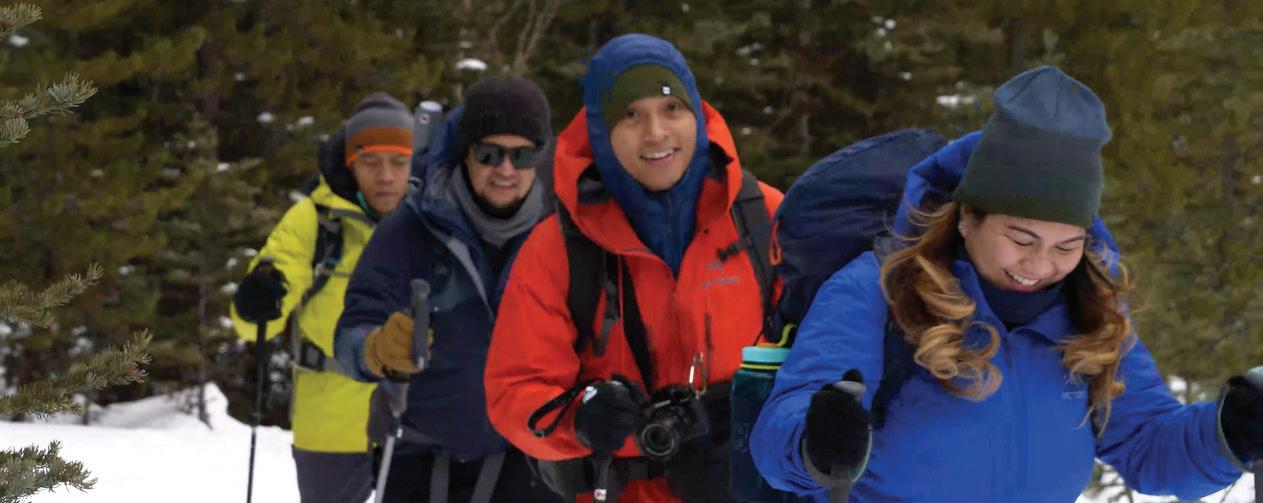
Each organization chose their AST provider, which enabled them to select the best provider for their group. The access to gear can be a barrier and through a generous donation from BCA, we were able to equip two Tool Boxes with the required avalanche safety gear (eight sets of BCA transceivers, shovels, and probes) to use for this grant. This grant enabled more Canadians to further their knowledge of avalanche terrain and safely pursue outdoor adventures. We plan to partner with MEC to offer this grant again in the 2022-23 season. We will look for opportunities to expand this program and provide avalanche safety training to more people.
Looking ahead, we will continue to invest in work that helps remove barriers to belonging in the outdoors. We are seeking to diversify our avalanche ambassadors and will be creating more visual resources that feature Canadians from diverse backgrounds. We will continue to look for opportunities that help eliminate and dismantle the barriers to belonging that many communities face and enable even more Canadians to safely pursue outdoor adventures. We are working with diversity leaders across dimensions of difference to guide us and identify areas where we can be more inclusive.
We are committed to ensuring our programs and services are welcoming to all of Canada’s diverse population. This is just the beginning. We recognize that a tremendous effort is required for the future, and we have a lot to learn.
Members of the K8 Mountaineering Club learn about companion rescue at their AST 1 field day, thanks to a MEC Avalanche Safety Grant.
Image: Leanne Allison
Traditional
Jan.
March
Feb.
Jan.
Feb.
Social media is an important tool at Avalanche Canada as it reaches a wide audience. It’s used not only for broadcasting avalanche safety information and education, but also to introduce our products and services, promote events, and build relationships with our community. We also use social media to share blogs written by our forecasters, which are very popular and consistently shared thousands of times.

We saw growth across all our social channels and accounts again this season. As in previous years, we worked to shape our social content to suit the needs of our users by including more video and educational content in our channels. As the social media landscape shifts towards short form video content and images, we are adapting our content to ensure that we continue to reach people. As TikTok use has exploded among young people, video content has become a focus for us to share avalanche safety messaging with this audience. Surveys show the top social media platforms of choice for young people include Instagram and TikTok, with users spending almost twice as much time on TikTok as its competitors.
To capitalize on this shift, we launched our new TikTok account. So far it has garnered 3,230 followers and 440,405 video views. Content is made by our field teams and in our main Revelstoke office and ranges from informative messaging about conditions to more creative and fun ways to reinforce our key messages. We've received lots of positive feedback from users about this new approach to messaging and we’re looking forward to developing the strategy further next season.
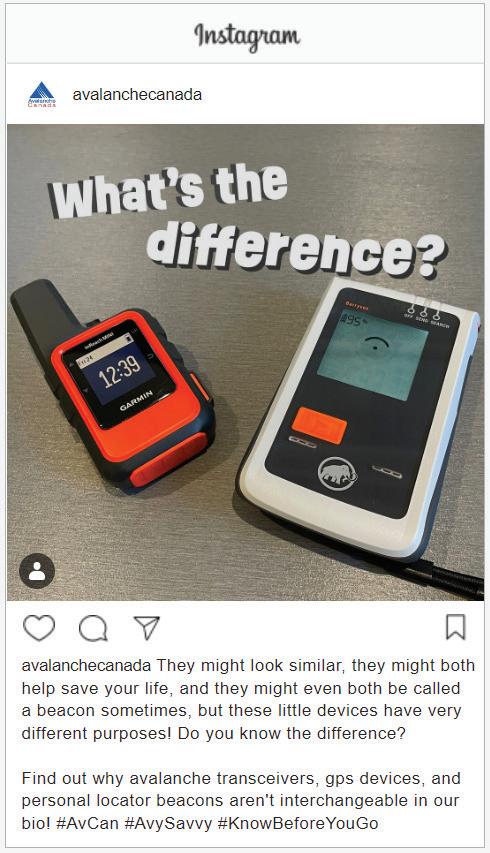
Last year we also expanded the social media presence of our field teams, adding new accounts for Vancouver Island and Northwest BC, while continuing to build our presence in communities with existing accounts. Our social media accounts for our Newfoundland team have been a particular success story, growing their following by almost 200% from the previous year. This has given us the opportunity to highlight our pilot program in the province and promote avalanche safety to a region where our impact has traditionally been limited.
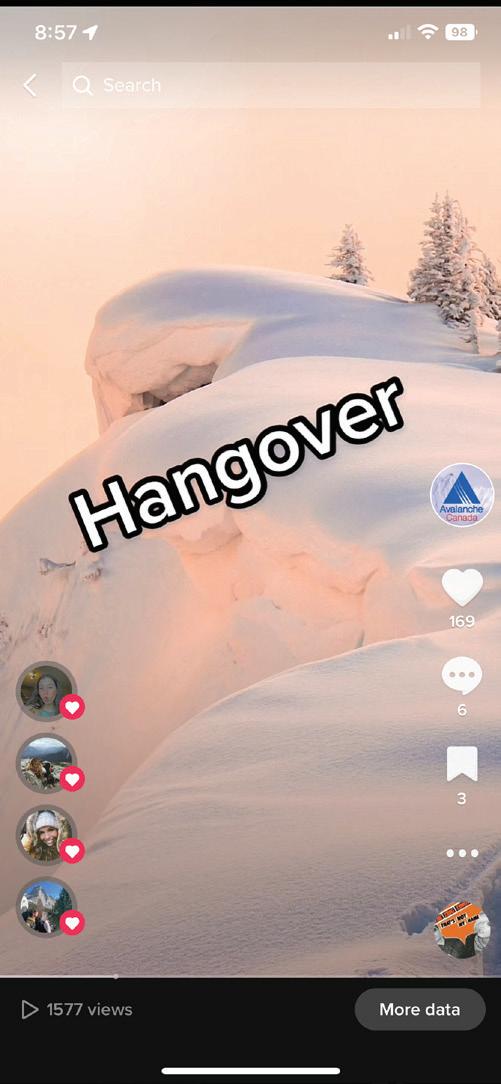
South
Avalanche Canada relies on technology to deliver our public safety products. The role of our IT department has increased substantially over the years, playing a crucial role in creating and improving products the public and our forecasters use daily.
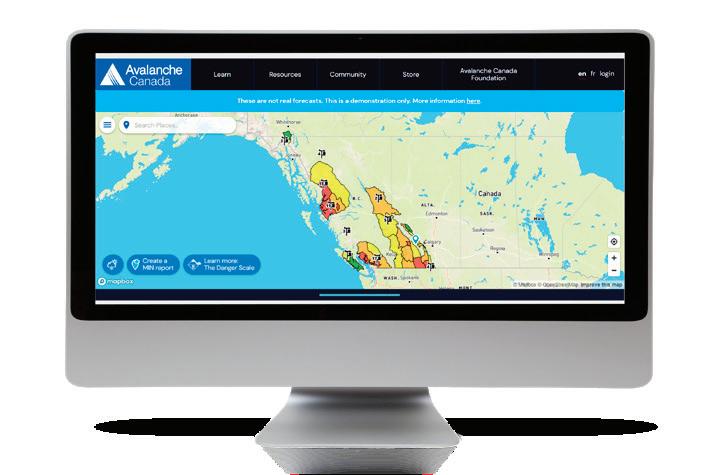

This year, our IT department grew to five members three full-time developers, one contract developer, and a dedicated full-time product manager. Key public products developed by our IT team include Avy Savvy, which was developed entirely in-house, improvements to the Mountain Information Network, adding new terrain ratings to the Online Trip Planner, and implementing forecasts by text messages.
A big success this year was the exceptionally high uptime for the Avalanche.ca website. Uptime is a metric representing the percentage of time that an IT system is successfully operational. Although 100% uptime is the goal, 99.90% uptime is the industry standard. This year, Avalanche.ca saw 99.99% uptime; this means our total downtime was less than one hour last year. Thanks to the great work accomplished by the IT team, we were able to provide a reliable, seamless experience for users throughout the season.
The IT team is especially vital to the ongoing development of AvID, our own custom forecasting software. Version 1.1 was developed in-house and successfully deployed in 2020; the team is working to finalize version 1.2, which is scheduled to deploy this winter.
Having a strong and dedicated IT team gives us the ability to create products designed specifically for the needs of our users and staff, and the flexibility to adapt quickly.
Rockies field team member Les Crawley skis in the Kootenays. Image: Colin Garritty
website and app page views unique users of our app unique users of our website
Vimeo plays hours of watch time on YouTube
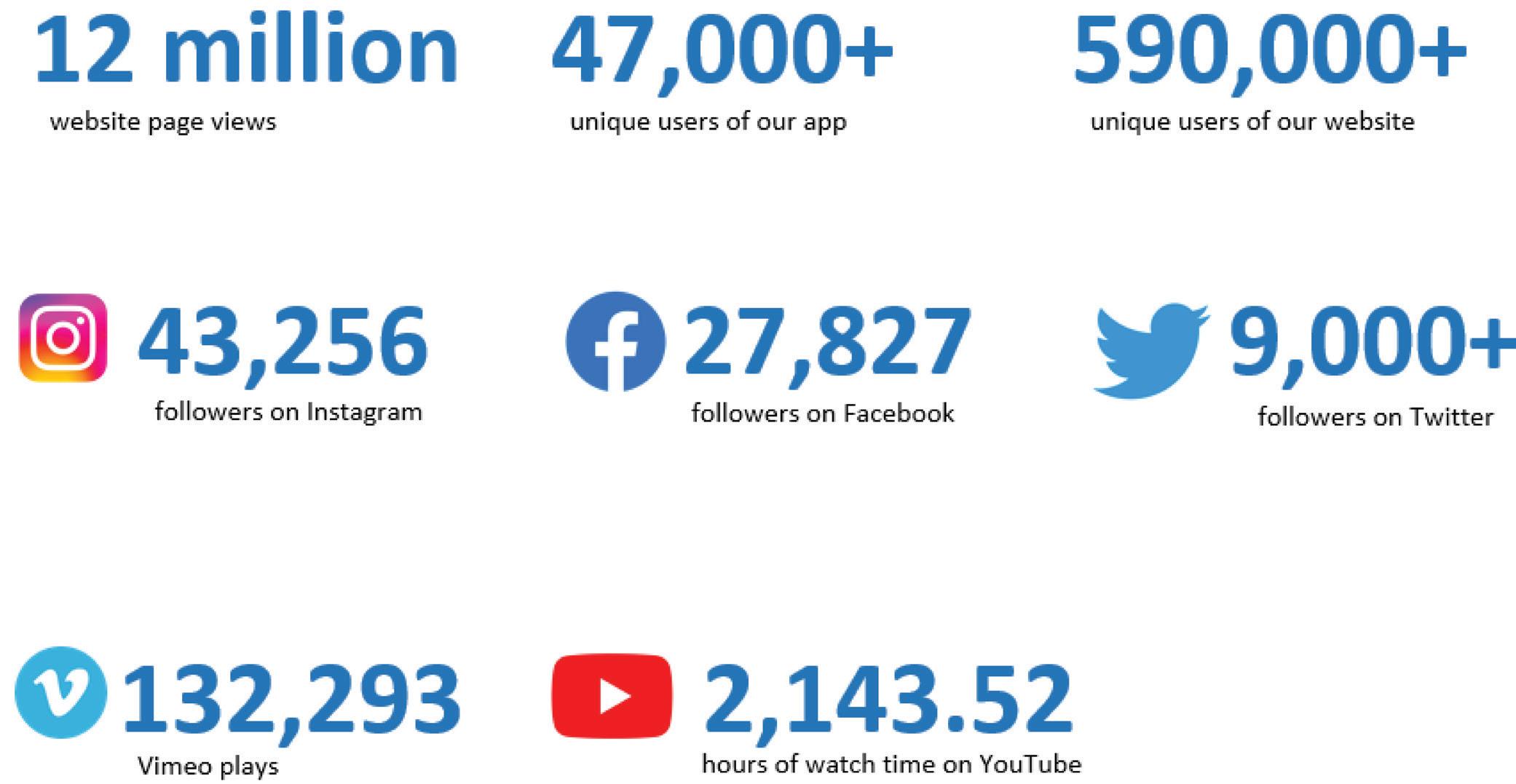
Our weekly MIN to Win contest continued to go from strength to strength this season, with prizing supplied by sponsors for the contest on our main social media channels. The continuing competition encourages and rewards MIN submissions and we’re excited to see that posting a MIN is becoming part of many recreationists' regular backcountry routines.
We continued with our Q&A sessions on Instagram, which proved as popular as ever. We also created Instagram quizzes with information about common themes seen across avalanche forecasts. From the feedback, we know these were especially appreciated by newer backcountry users.
Once again, we used our Google Ad Grant to run ads on Google, Facebook, and Instagram that drove traffic to our website. The ads directed users to our forecasts, Start Here page, and Avy Savvy. These ads are funded by a non-profit grant from Google and are displayed to people searching for related terms, such as ‘snowshoeing’ or ‘mountain safety’.
We also continued to run paid campaigns on social media to target users for specific messaging about conditions and relevant safety information.
Avalanche Canada issues The Aspect monthly during the winter season. This e-newsletter provides ongoing updates about our programs, products, and services, as well as insight into new projects, our challenges, and our successes. The Aspect has over 7,700 subscribers and is delivered in both official languages.

This season our open rate ranged from 42% to 62%, which is roughly double the average of other nonprofits, according to Mailchimp. This demonstrates how much our users value our work.
 Avalanche forecaster Simon Horton at Pine Pass in the North Rockies.
Image: Grant Helgeson
Avalanche forecaster Simon Horton at Pine Pass in the North Rockies.
Image: Grant Helgeson
The Avalanche Canada Ambassador program works with elite athletes to promote avalanche safety in their area of winter recreation. Our ambassadors are highly accomplished, and we are excited to have them on our team, promoting Avalanche Canada training programs, our Mountain Information Network, and our forecasts. With their help and influence, our messages of awareness and safety reach a wider audience.
Sarah has pushed women's ice and mixed climbing in North America for many years and has been alpine/ice guiding in the Canadian Rockies for 16 years as an ACMG Alpine Guide. Running her own company, she specializes in women-specific camps that focus on building independence and skills toward self-reliance and leading in the mountains. With the loss of her dearest friend to an avalanche while ice climbing, Sarah understands the risks of the mountains with the greatest respect. She is sponsored by Arc'teryx, Scarpa, Sterling ropes, and Onward Up.
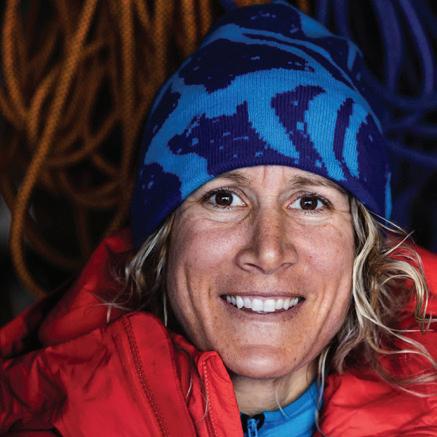
Chris has been a globally recognized professional skier for well over a decade. Truly dedicated and extremely passionate about skiing in the mountains, Chris spends as much time as possible in the backcountry every winter, specializing in putting beautiful lines down mountains for both film and photo projects. He spends his winters collaborating with the Blank Collective, Salomon TV, and Matchstick Productions. He is passionate about sharing his experience and knowledge to help educate people about backcountry skiing. Between ski trips, Chris resides in the town of Revelstoke, BC, and now spends his off-season working hard, growing organic vegetables at First Light Farm.
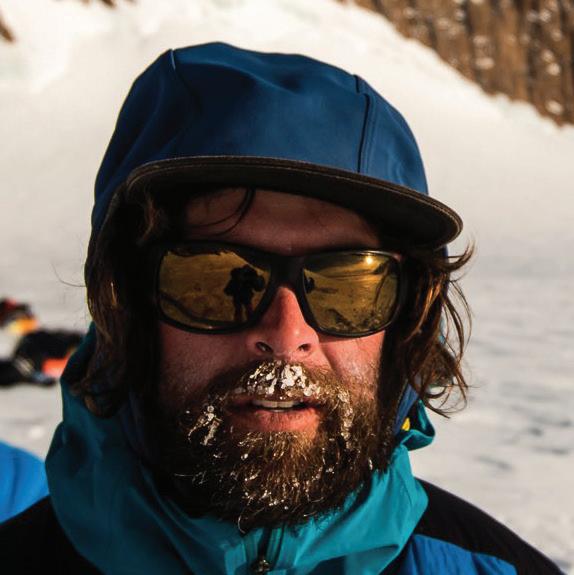
Nadine started out on a snowmobile at age seven and has never looked back. She got into serious mountain sledding in 2007 and has been guiding in the Revelstoke area since 2010. She spends well over 100 days a season on her machine, riding with all different skill levels and pursuing professional-level avalanche training. In 2012, Nadine started La Nina Sled Camp, a venue for women riders to build confidence in a positive environment, away from the stress of having to keep up with their partners. Nadine hopes to continue influencing and educating other women to “get out and shred” as often as they like.

Abby is a photographer and writer specializing in backcountry photoshoots and culture. She also regularly speaks at snow safety clinics and has created her own series of social events known as "Split Social,” aimed at educating and building a strong community for splitboarders, while instilling good communication between all backcountry users. Abby volunteers with Mountain Mentors and SheJumps and works with Wheelie Creative to help increase female participation in the outdoors. Abby is supported both in front and behind the camera by Arc’teryx, Karakoram, Smith Optics, and G3 Gear.
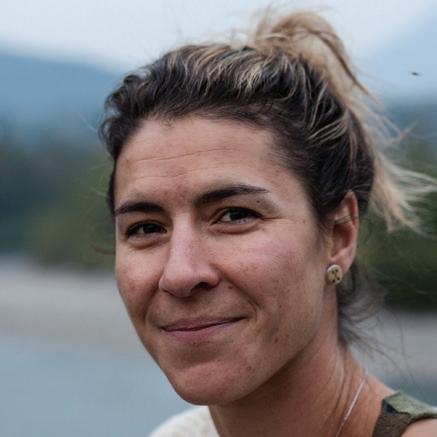
This was year six of our Youth Avalanche Ambassador Program, and we have five outstanding riders from across the country who demonstrate a strong commitment to backcountry safety. Their role is to help promote forecasts, training programs, Special Public Avalanche Warnings, events, and the Mountain Information Network, as well as share their personal stoke and passion for the outdoors.
Jonathan Walsh
Norris Point, NL @jonathann_walsh
Amy Ertel
Whistler, BC @amyertell
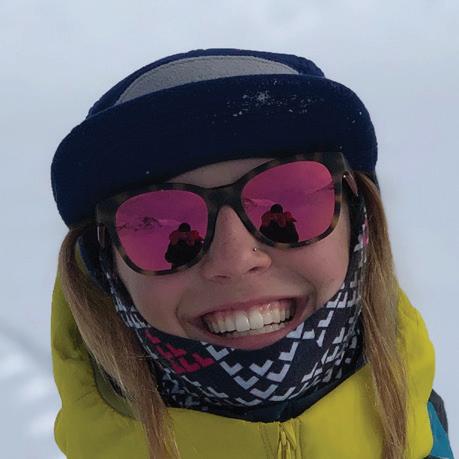
Aleks Klassen

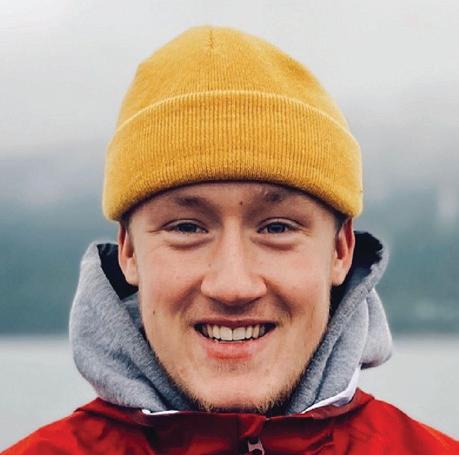
Revelstoke, BC @aleksklassen

Mason Kenyon
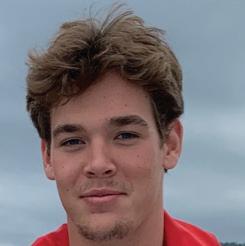
Stony Plain, AB @mason.kenyon
Nathan Shears
Rocky Harbour, NL @nathan_shears_
Avalanche Canada ambassador Abby Cooper in action on Blackcomb Peak. Image: Matt Sylvestre
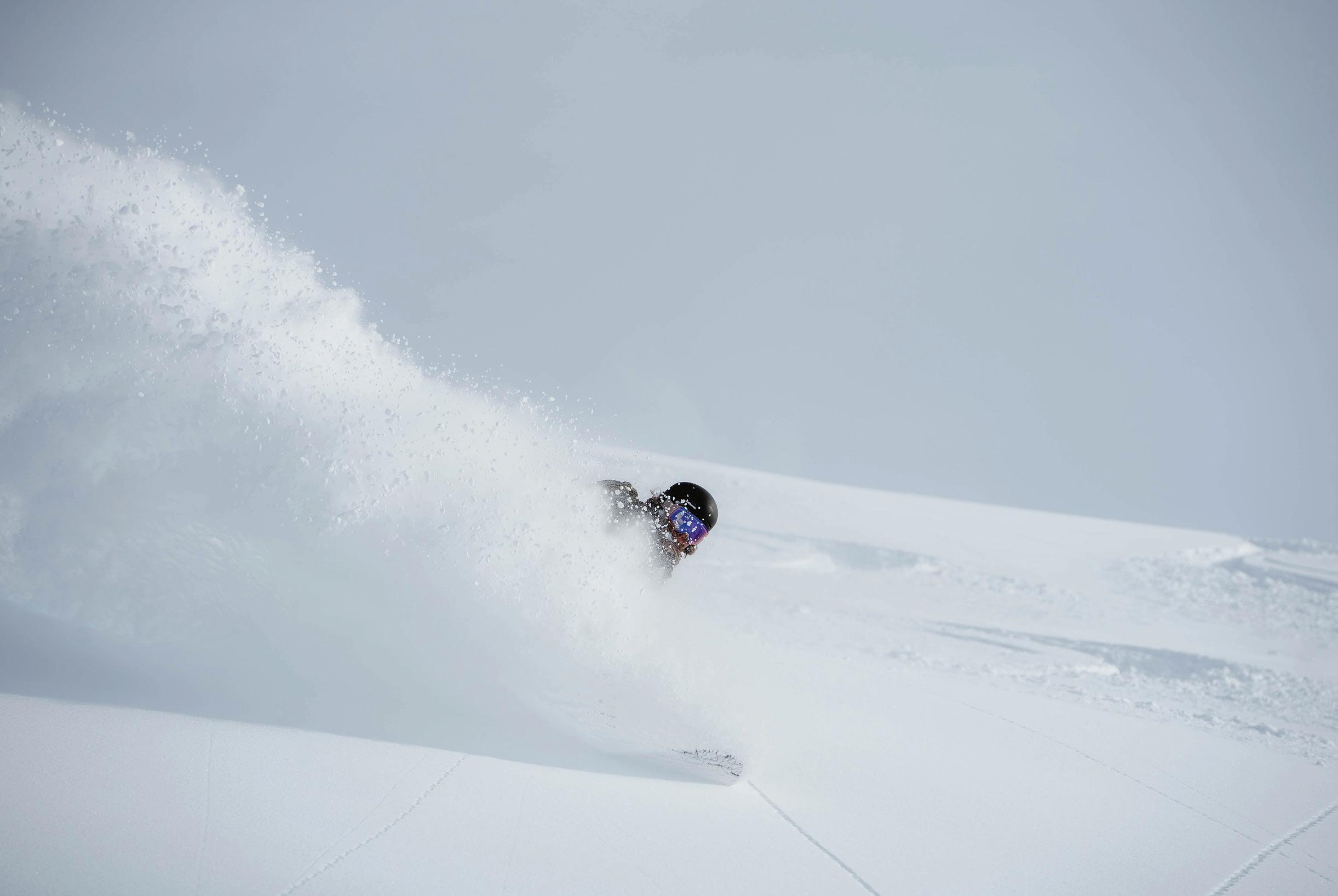
Avalanche Québec and Avalanche Canada have a long-standing relationship and have collaborated on many initiatives over the years. Avalanche Québec is a non-profit organization with a mission to protect the public, prevent accidents, and improve avalanche safety by providing a range of activities and services to raise awareness, inform and educate the population, mainly in Québec. Founded in 2000 and based in the ChicChoc Mountains of the Gaspé Peninsula, it is the only centre of expertise in avalanche safety east of the Rockies.
Avalanche Québec has administered Avalanche Canada Training programs in Québec since 2016. This includes support and supervision to instructors, advertising of courses, and the exclusive sale of course material. This season, 1,158 students took an avalanche course in Québec, a 76% increase compared to the previous winter.
The relationship and increased collaboration between Avalanche Canada and Avalanche Québec contributes to the national strategy objective. Together, we aim to provide essential avalanche safety services wherever they are needed across the country and support Avalanche Canada’s goal to become a truly national public avalanche safety organization.
As Canada’s national public avalanche safety organization, Avalanche Canada is continually working towards providing all our products and services in both official languages. We are offering more bilingual services and have been busy translating many of our products into French. This work raises our profile and makes avalanche awareness more accessible nationwide. We thank our colleagues at Avalanche Québec for their invaluable help in this area.
We published nearly all our daily forecasts in French again this winter. The danger ratings, avalanche problems, and terrain and travel advice were all translated. We are currently working on ways to automatically translate the free text portions of the forecast, such as the avalanche and snowpack summaries, which would make the entire forecast completely bilingual.

Our education products and services, including Avy Savvy (known as Ava Avisé in French), and the Avalanche Skills Training Handbooks are also available in French.
Lastly, all of our public communication products are translated, including our Special Public Avalanche Warnings, media releases, The Aspect, and this annual report.
Avalanche Québec forecaster Frédéric
B-Côté examines a weak layer of surface hoar in the snowpack in the Mines Madeleine area of the Chic-Chocs region.
Image: Avalanche Quebec

The Community Initiatives and Affected Areas Program from the Columbia Basin Trust supports local projects that provide value to communities in the Columbia Basin. The Columbia Basin is fortunate to have a strong culture of avalanche awareness across the diverse groups of backcountry users, including backcountry skiers, snowboarders, snowmobilers, snowshoers, ice climbers, winter hikers, and Nordic skiers.
With funding from the Columbia Basin Trust, we were able to present an avalanche and backcountry safety curriculum to 2,448 K–12 students this season. The breakdown includes 1,950 in-class theory sessions and 498 outdoor rescue sessions. Over the past five seasons, our program reached 18,456 students residing in Columbia Basin communities.

This winter we were able to certify 64 secondary school students with an AST 1, course bringing our total to 417 over the past three seasons. AST 1 is a certified course that teaches students 16 years and older about avalanches, terrain management, and companion rescue skills in a mix of classroom and field settings. We are very grateful to the Columbia Basin Trust for continuing to support our youth program.
Youth learn how to stay safe in avalanche terrain during a subsidized AST 1 course taught by Stay Wild Backcountry in Golden, BC. Image: Brittney Dickson
Members of K8 Mountaineering celebrate the completion of their Avalanche Skills Training 1, thanks to a MEC Avalanche Safety Grant.
Image: Leanne Allison
The MEC Avalanche Safety Grant is aimed at increasing accessibility to winter backcountry adventures for nonprofit organizations serving racialized communities. Avalanche Canada recognizes that racialized groups can face disproportionate barriers in accessing winter backcountry pursuits in Canada. With the support of MEC, this grant enabled Avalanche Canada to offer AST 1 courses to four non-profit organizations serving BIPOC (Black, Indigenous, people of colour) communities.
Grant recipients:
• K8 Mountaineering Club of Alberta, an organization that supports Filipino Canadians who enjoy hiking and climbing.

• Colour the Trails Alberta, which creates safe spaces to encourage BIPOC individuals to take part in outdoor activities.
• Rocky Mountain Métis Association, which aims to develop and enhance opportunities for Métis people in Kimberley, Cranbrook, Creston.
• Indigenous Women Outdoors, helps First Nations women and non-binary folks reconnect to their traditional territories and Indigenous roots through backcountry sports in the Sea-to-Sky area.
Thanks to MEC's generous grant, each group was given funds to organize an AST 1 course for up to eight members with the provider of their choice. Backcountry Access (BCA) also contributed to this initiative by providing two boxes of required avalanche safety gear (eight sets of BCA transceivers, shovels, and probes) which were shipped out for the AST courses. We are very impressed with the work being done by these four organizations and are grateful to partner with MEC to provide them with avalanche safety education and make the outdoors more inclusive.
“The AST 1 course with Colour the Trails was filled with joy and laughter from the lecture day to the field day. I wouldn’t have done this with any other group. Learning with like-minded people who look like you provides an environment of ease.” Colour the Trails student
“Thank you so much for this opportunity, everyone was super grateful, and all learned so much because of this grant.” Indigenous Women Outdoors student
The International Snowmobile Manufacturers Association (ISMA)—the industry association representing Ski-Doo, Polaris, Yamaha, and Arctic Cat—has been one of Avalanche Canada’s most important supporters for more than a decade. ISMA has been a valuable partner by helping us engage with the snowmobile community, advocating for avalanche safety, and supporting the acquisition of snowmobiles for our expanding field program.
ISMA has provided direct funding and also helped develop the “10 Commandments for Mountain Snowmobilers,” a collection of steps to promote safe riding in the backcountry. Along with its members, ISMA has amplified our avalanche safety messages to the snowmobile community.

ISMA has been instrumental in our loaner snowmobile program, where each manufacturer has provided us with a snowmobile to use for the season. These loaners have been vital to our field program as we’ve slowly acquired our own fleet of snowmobiles.
We are very grateful for the support provided by ISMA over the past decade and look forward to continuing this important partnership.
As a non-profit, non-government organization, we work hard to acquire grants, seek stakeholder support, work with sponsors, and make every cent count. Ensuring continued access to vital public safety information and programs is a huge job that we can’t do alone; we appreciate all the help we get. Tremendous thanks to the individuals and groups who put time, energy, and resources towards making their backcountry community safer.
The CrowSnow Riders, based in Crowsnest Pass, Alberta, donated $1,213 from their annual Poker Run to Avalanche Canada. The event attracted more than 300 riders from across western Canada, ranging in age from two to 87 years old.
The Hunters Range Snowmobile Association, based out of Enderby, BC, donated $500 from their 10th annual Bingo Rally and Family Day event. The club chose to donate $500 to support our programs.
Thank you to both clubs for your ongoing support of our programs. We greatly appreciate grassroots support from clubs like these.

The 12th annual Canuck Splitfest was a huge success, with 255 registrants and more than $21,000 raised for our programs. This year's Splitfest featured three evenings of webinars and a week-long online fundraiser. Professional snowboarder Robin Van Gyn’s webinar on mentorship and her path to becoming a professional splitboarder received the highest attendance. A huge thank you to the moderators, speakers, and panelists for their engaging presentations.
We are so grateful for all the sponsors who helped make this Splitfest a success.
• Title sponsors: Mountain Equipment Company, Eagle Pass Heliski, Columbia Basin Trust
• Gold sponsors: Arc’teryx, Outdoor Research, Weston, Scott, Spark R&D, Mammut, Korua, Lib Tech, Karakoram, The North Face, Nitro, Trapper Snowboards, Society Snow & Skate, Intuition, Sandman Hotel, Revelstoke Tourism, FATMAP, G3, Phantom, Alpine Club of Canada
• Silver sponsors: BCA, Stoke Roasted Coffee Co., Cheetah Factory Racing, NiBZ, CAPOW
• Bronze sponsors: Free Spirit Sports, Burton, Mt. Begbie Brewing Co., Whitewater Ski Resort
Although this is a very popular event, we plan to transition ownership to an organization within the splitboard community to host this event for 2023.
This winter, Tourism Revelstoke launched a new campaign to recognize the importance of avalanche forecasting and safety programs. With the "Get Out and Give Back" campaign $50 was donated to Avalanche Canada for every backcountry skier, snowboarder, snowmobiler, or snowshoer who booked a two-night stay at participating accommodations. Tourism Revelstoke also encouraged backcountry users to donate directly to Avalanche Canada. Tourism Revelstoke has been a long-time supporter of Avalanche Canada and we are grateful for their support.
This is the second year that Ole Originals, a Vancouverbased clothing company, designed shirts and hoodies for us, donating 25% of the proceeds to support our public avalanche safety programs.
Ole Originals designs and prints retro-style and geographicinspired graphics on high-quality garments. Designs are inspired by the outdoors, travel, wildlife, and the places we love across Canada.
Freeride clothing manufacturer Flylow’s Good Lab program works directly with non-profit and community organizations to help them design, manufacture, sell, and ship customized products, and a portion of the money goes back to their causes. Flylow created Avalanche Canada toques in two styles (a beanie and a pom-pom).
Each year, Avalanche Canada presents the Gordon Ritchie Service Award to an individual or organization who has demonstrated exceptional dedication to public avalanche safety. This year, the award was presented to Karl Klassen and Mary Clayton in recognition of their invaluable contributions to public avalanche safety throughout their careers.
Mary and Karl have been with Avalanche Canada since its inception in 2004 as the Canadian Avalanche Centre. They both played key roles in helping Avalanche Canada become a world-class public avalanche safety organization.
Karl, a certified Mountain Guide with the Association of Canadian Mountain Guides, began his avalanche safety career as a forecaster and in 2009 became Manager of the Public Avalanche Warning Service. He took a small, dispersed group of forecasters and built the world’s largest forecasting program. Most recently, he led the development of the ground-breaking AvID forecasting software.
Mary, with a background in journalism and avalanche control, was the first person in Canada to undertake a communications role dedicated to public avalanche safety. She shaped the way we communicate with the public, as well as professional and government organizations.
Avalanche Canada has grown exponentially under Mary and Karl and now provides programs and services nationwide. Since 2004, the 10-year running average of Canadian avalanche fatalities has declined by 30%, despite unprecedented growth in winter backcountry recreation. Mary and Karl’s contributions played a substantial role in this accomplishment.
Although Mary and Karl retired from Avalanche Canada in July, they are both staying on in advisory roles for the 2022-23 season.
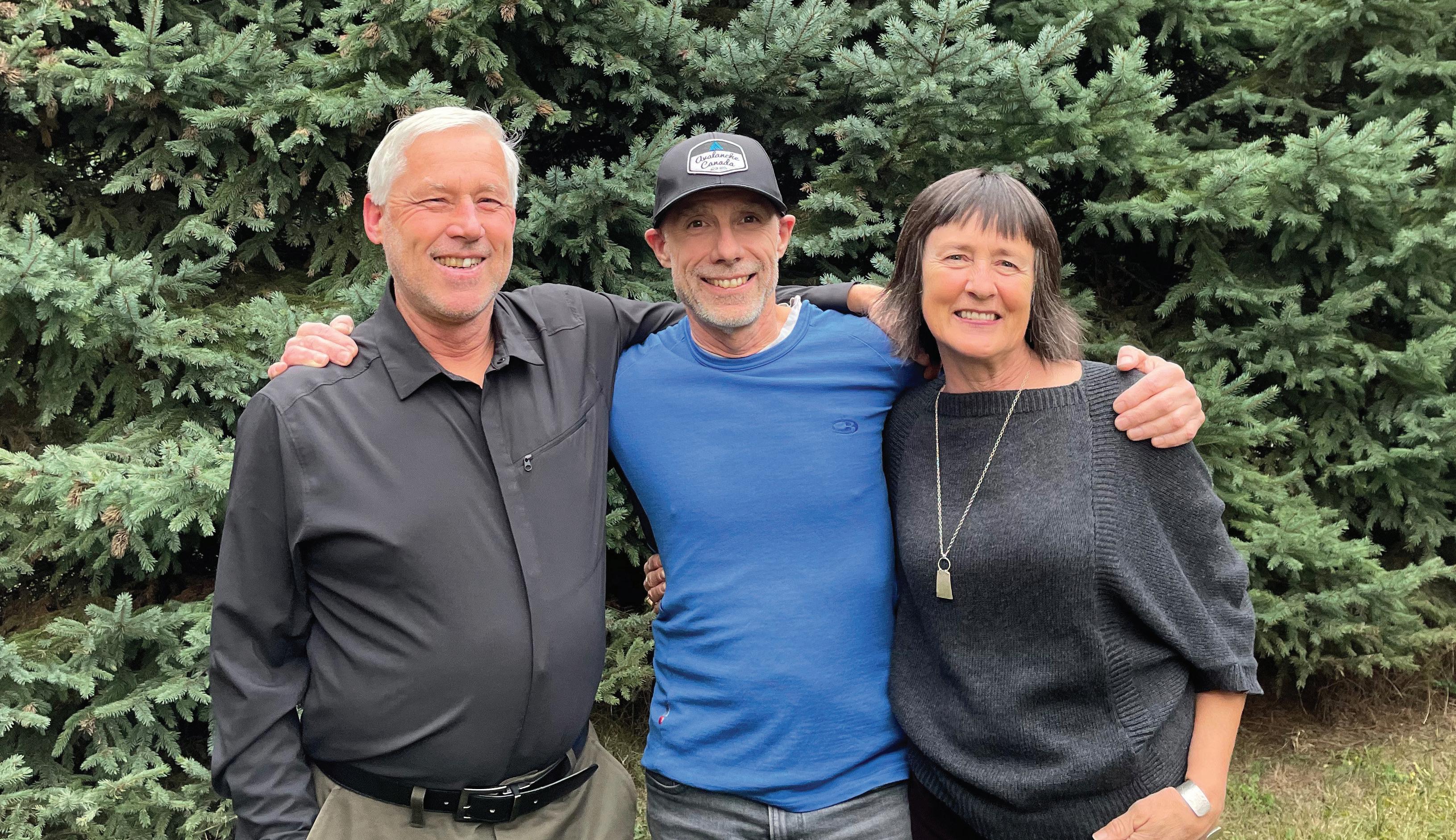
Avalanche Canada has six field teams, based in the South Rockies, North Rockies, Northwest BC, Yukon, Vancouver Island, and Newfoundland. Field teams gather critical data from the field—snow, weather, and avalanche observations— which enables our forecasters in Revelstoke to produce forecasts.
Field teams do important outreach, connecting with local users at trailheads and on mountain tops, and on their respective social media channels. Video and annotated images are shared regularly on social media accounts to help communicate current conditions and terrain choices with local users. Field teams also play a big role in encouraging the use of our Mountain Information Network (MIN).
This was the third year for our North Rockies field team. Thanks to increased funding from the BC Government, we were able to provide daily forecasts for the North Rockies for the first time. The team works across a large and varied region that stretches from Valemount in the south to Chetwynd in the north. Based out of Prince George and McBride, team members made field trips throughout the region, providing essential snowpack, weather, and avalanche observations for our forecasters in Revelstoke.
In addition to their field work, the team conducted outreach events and grew its social media following by 35%. The North Rockies team participated in Mackenzie Cabin Fever Days by running transceiver and rescue practice.
Based out of Rocky Harbour, this two-person team collects snowpack and weather data, shares avalanche safety information on its social media channels, engages with recreationists both in-person and on social media, and meets with local stakeholders. The team increased its social media following by nearly 200%. This important work established the foundation for a public avalanche safety program that meets the needs of Newfoundlanders.

This year, thanks to the good work done by our local field team, we were able to provide a weekend forecast for the Long Range Mountains in a six-week pilot project running from February 18 to March 26. The team also hosted a webinar in early February to promote the pilot project. We’re looking forward to providing even more services for this region.
Our new Northwest BC field team worked hard to develop a new program and was very well received in their region. Based out of Smithers, the team collected local snow, avalanche, and weather information to augment our regional forecasts for the Northwest Inland region of BC. The team also travelled to the Northwest Coastal region.
The Northwest BC team participated in the Bulkley Backcountry Ski Society’s women’s backcountry session, providing transceiver and rescue instruction. Having this team in the field improved the accuracy of our forecasts, especially in data-sparse regions.
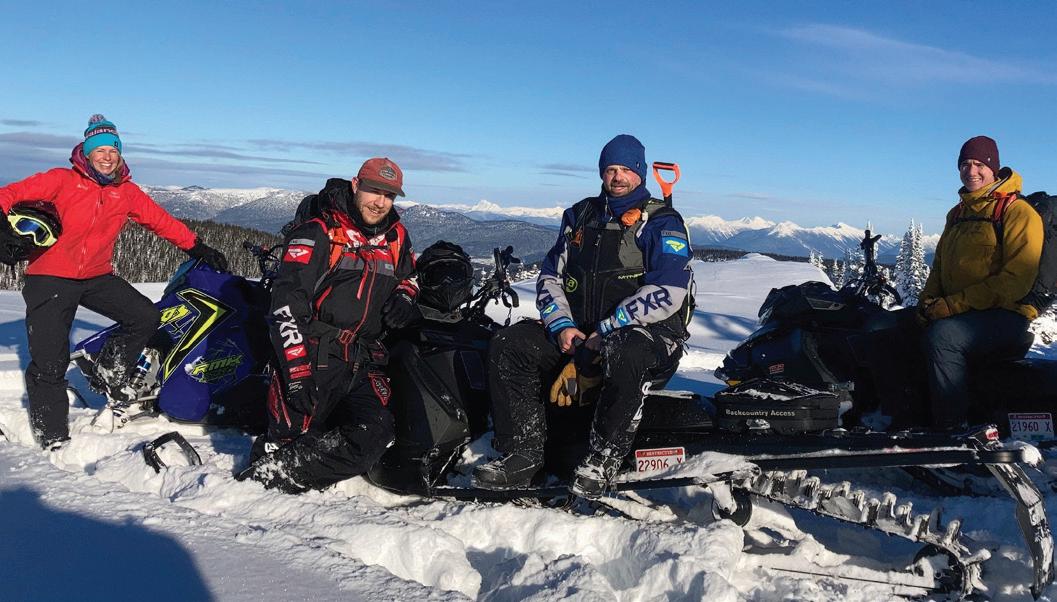

The South Rockies field team is our longest-running field team and serves as the model for which all other teams are based. Established in 2011, it has built up a loyal following on social media and helped develop a culture of backcountry safety in its region. The South Rockies field team services two forecasting regions: the Lizard Range Flathead and the South Rockies.
The South Rockies team attended the Fernie Snowmobile Association’s Avalanche Awareness Day and the Castle Mountain Avalanche Awareness Day again this season, helping run the transceiver and rescue stations. The South Rockies team has developed a highly successful model of promoting a culture of avalanche safety through outreach and social media.
the Alpine Club of Canada and the Island Mountain Ramblers. They also participated in the Mt. Cain Backcountry Fest and an event for backcountry users at Mt. Washington. Engaging directly with Vancouver Island’s backcountry users is a vital part of this program, which is why it's important to have representatives in the community.
Thanks to BC funding, our new three-person field team on Vancouver Island supplied forecasters with the data required for the daily bulletin. The Vancouver Island team is based out of Campbell River and is responsible for collecting snow, weather, and avalanche data for the forecasts, developing partnerships with local stakeholders, and making connections with Island recreationists.
The Vancouver Island field team worked hard to become a part of the Island backcountry community. They presented at two outreach events, collaborating with the local section of
The Yukon field team covers several popular backcountry areas in the southern Yukon and far northern BC. Thanks to its work, Yukon recreationists received daily avalanche forecasts for the first time through the winter. During the 2020-21 season, we published bulletins four times each week. The three-person field team is based in Whitehorse and operates primarily in White Pass.
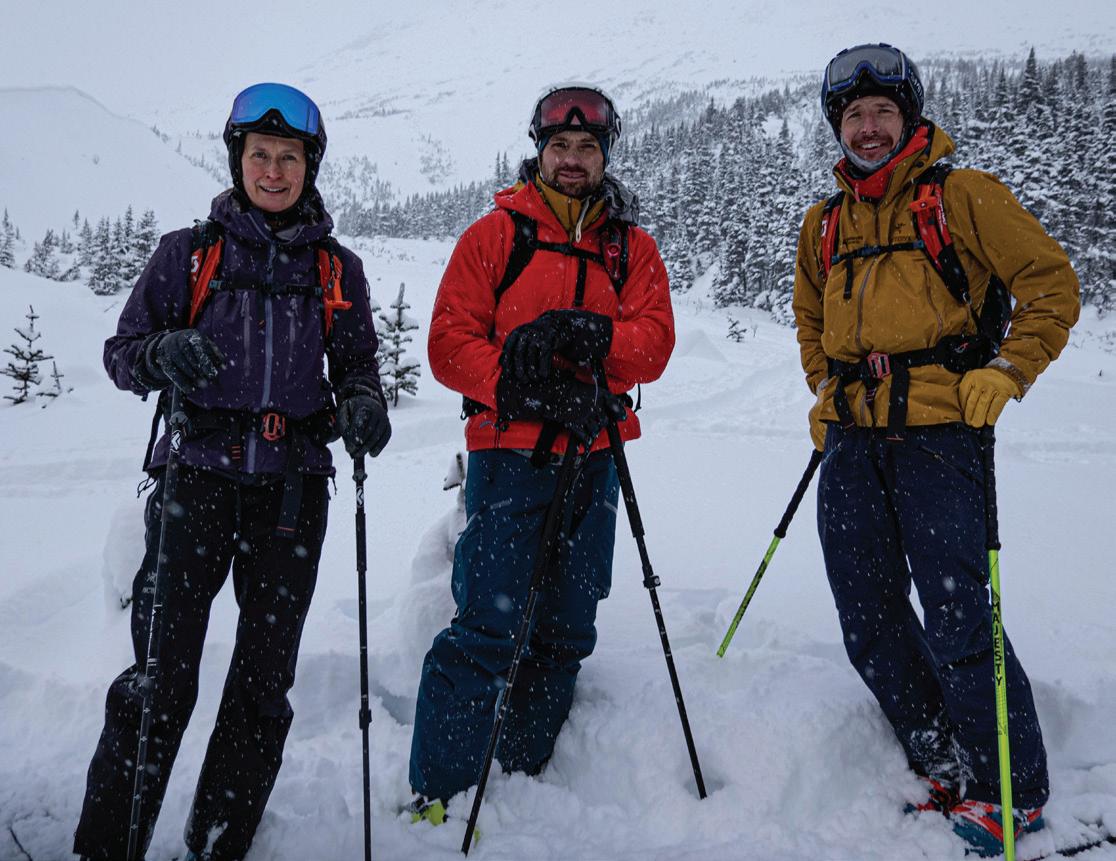
Yukon recreationists include skiers, snowboarders, snowmobilers, snowshoers, cross-country skiers, hikers, hunters, and trappers. This diversity of users is unique to the Yukon and the team worked to develop social media content applicable to each of these groups. This team increased its Instagram following by 87%. The Yukon Government provides funding for this program, in collaboration with the Yukon Avalanche Association.

Field team members: Newfoundland & Labrador field team, from left: Andy Nichols and Peter Thurlow. Image: NL field team | North Rockies field team, from left: Martina Halik, Ben Hawkins, Dave Merritt, and Paul Kehler. Image: James Floyer | NW field team, from left: Emily Jones and Lucas Holtzman. | South Rockies field team, from left: Leslie Crawley, Lisa Larson, and Jennifer Coulter. Image: Leslie Crawley | Vancouver Island field team, from left: Bill Phipps, Karina Bakke, and Colin Garritty. | Yukon field team, from left: Jeni Rudisill, James Minifie, and Drew Nylen. Image: Ilya Storm

Winter backcountry recreation is growing in eastern Canada, and with it an increased need for public avalanche safety services. In the middle of the season, we ran a six-week pilot project providing a weekend forecast for the Long Range Mountains, including Gros Morne National Park. Forecasts were published every Friday and Saturday from February 18 to March 26, providing backcountry users with valuable guidance to plan their trips. For many local users, this was their first time accessing an avalanche forecast and we received many positive comments about the program.
Feedback for the 2021-22 NL pilot project:
• “I believe this to be a valuable service, long overdue for this area. Most people who frequent the backcountry were somewhat aware but I don’t believe they were convinced of the possibility or frequency of avalanches on the west coast of the province.”
• “Thanks for bringing forward such a vital need to the region.”
Since 2004, when Avalanche Canada was established, our forecasters have relied on the professional avalanche information exchange known as InfoEx as our primary source of data.
InfoEx is a subscription service for professional avalanche operations in Canada that allows a daily online exchange of snow, weather, and avalanche observations.
As a subscriber, Avalanche Canada accesses this reliable stream of highquality data, which then informs our understanding of the ever-changing snowpack across the vast and remote mountainous regions of western Canada.
InfoEx has been administered by the Canadian Avalanche Association every winter since 1991. The InfoEx system, and its subscribers who provide their data daily, play an integral role in Canada’s public avalanche safety.

AvID (Avalanche Information Distribution) is our long-running project to develop new forecasting software. It began in 2017, funded by a three-year grant from the National Search and Rescue Secretariat’s New Initiatives Fund. AvID is now a self-funded project with expanded goals aimed at improving the tools that our forecasters use to aggregate and analyze the massive amount of data they receive daily from across our regions.
Our AvID forecasting software project progressed rapidly this winter, with new products introduced and more in development. First, the Avalanche Canada development team delivered an operational version of a highway avalanche forecast application for the Colorado Avalanche Information Center’s (CAIC) highway avalanche safety program. This app was used successfully by the CAIC this winter to deliver highway avalanche closure and control information to the Colorado Department of Transportation.
The design and technology developed for the CAIC’s highway forecast app was then used to build an app that tracks persistent weak layers as they develop and evolve. This app has been integrated into the next version of the AvID forecasting system and will be used by forecasters this winter. This version will change the way avalanche conditions are displayed on our map and allow for more accurate public forecasts. We are excited to continue our work with the CAIC to build the next generation of avalanche forecasting software.
We are also partnering with forecasters at Parks Canada and Alberta Parks – Kananaskis Country. The forecasters at Kananaskis Country have been using AvID since we launched our live version in 2019. Parks Canada’s forecasters, who forecast for the mountain national parks in BC and Alberta, have been collaborating on the design and development process. For the coming 2022-23 season, all avalanche forecasts in Canada, including those issued by Parks Canada, will use our AvID software.
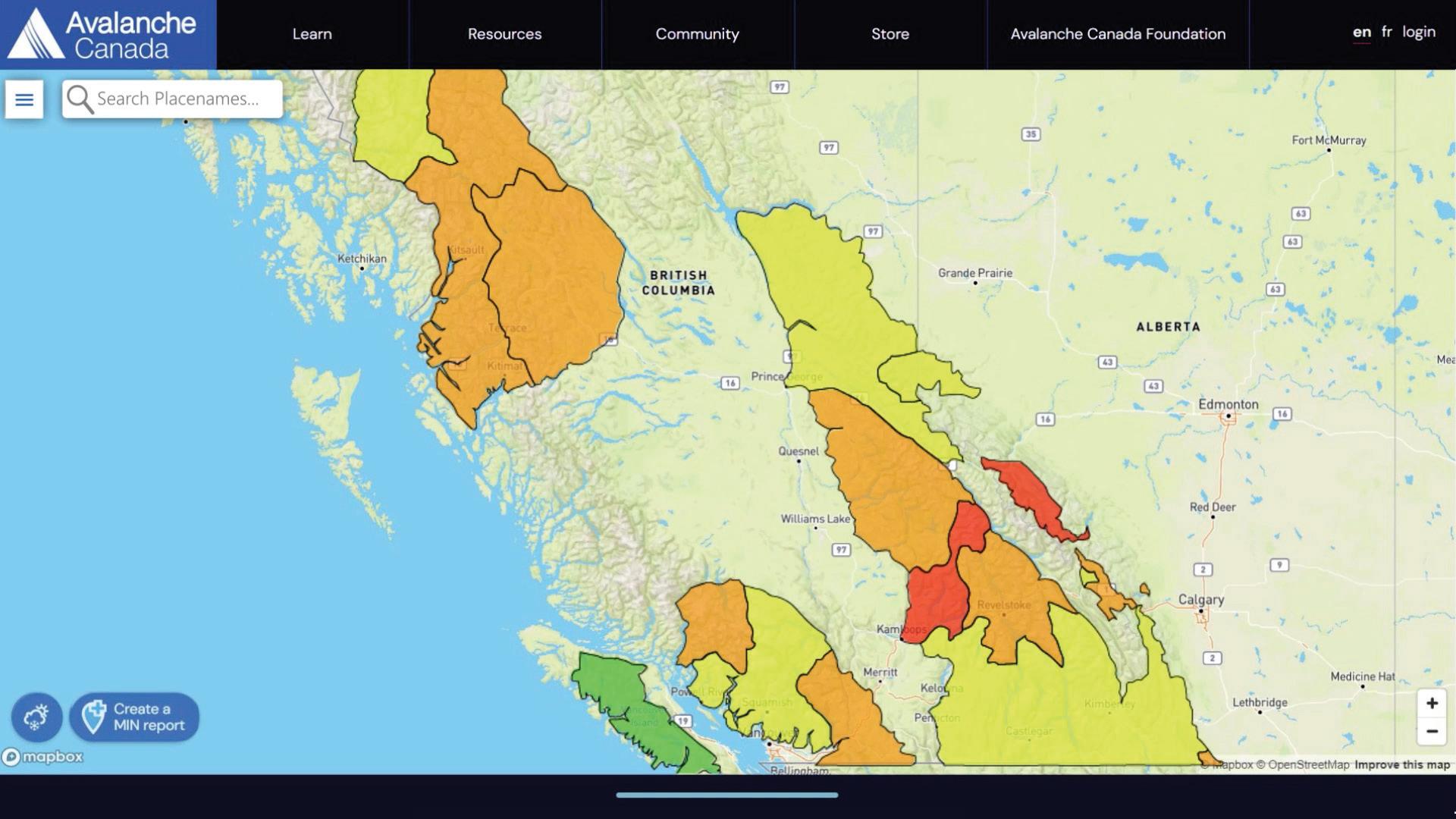
We're bringing a new look to our forecasting map for the 2022-23 season. Flexible forecast regions will respond to changes in avalanche conditions.
Image: Avalanche Canada
always
as many users as possible. Last year, we introduced forecasts by text message, an abbreviated version of the forecast available through satellite messenger devices such as an InReach or SPOT. This service allows backcountry recreationists who spend extended periods offline and away from cell service to access an abbreviated version of their daily regional forecast.
safety
Forecasts by text come in two short messages: the first contains the danger ratings and the second contains the forecaster's key messages for the current conditions. The full forecast accessed through the Avalanche Canada app or website is always the best choice if it’s available, but for users spending multiple days in remote locations away from cell service, we are pleased to continue to provide this great option.
Our IT team is working to retool the Forecast by Text service to fully integrate with the updated version of our AvID forecasting software to provide a consistent user experience.
The Mountain Information Network (MIN) is an information sharing platform that allows users to share observations in real time. This provides an important resource for decision making. This year, there were a total of 3,832 MINs posted. This is down from last year’s record high of 5,500 but continues to reflect an overall increasing trend. Our users and forecasters consumed the MIN reports in vast numbers—they were read over one million times!
The MIN is an essential tool for backcountry recreationists and professionals alike. The information sharing platform allows users to submit their observations from the field, in real time, providing an important resource for decision making. Observations shared with the MIN are also an integral part of our forecasters’ workflow, supplying information to fill in data gaps, especially in data-sparse regions.
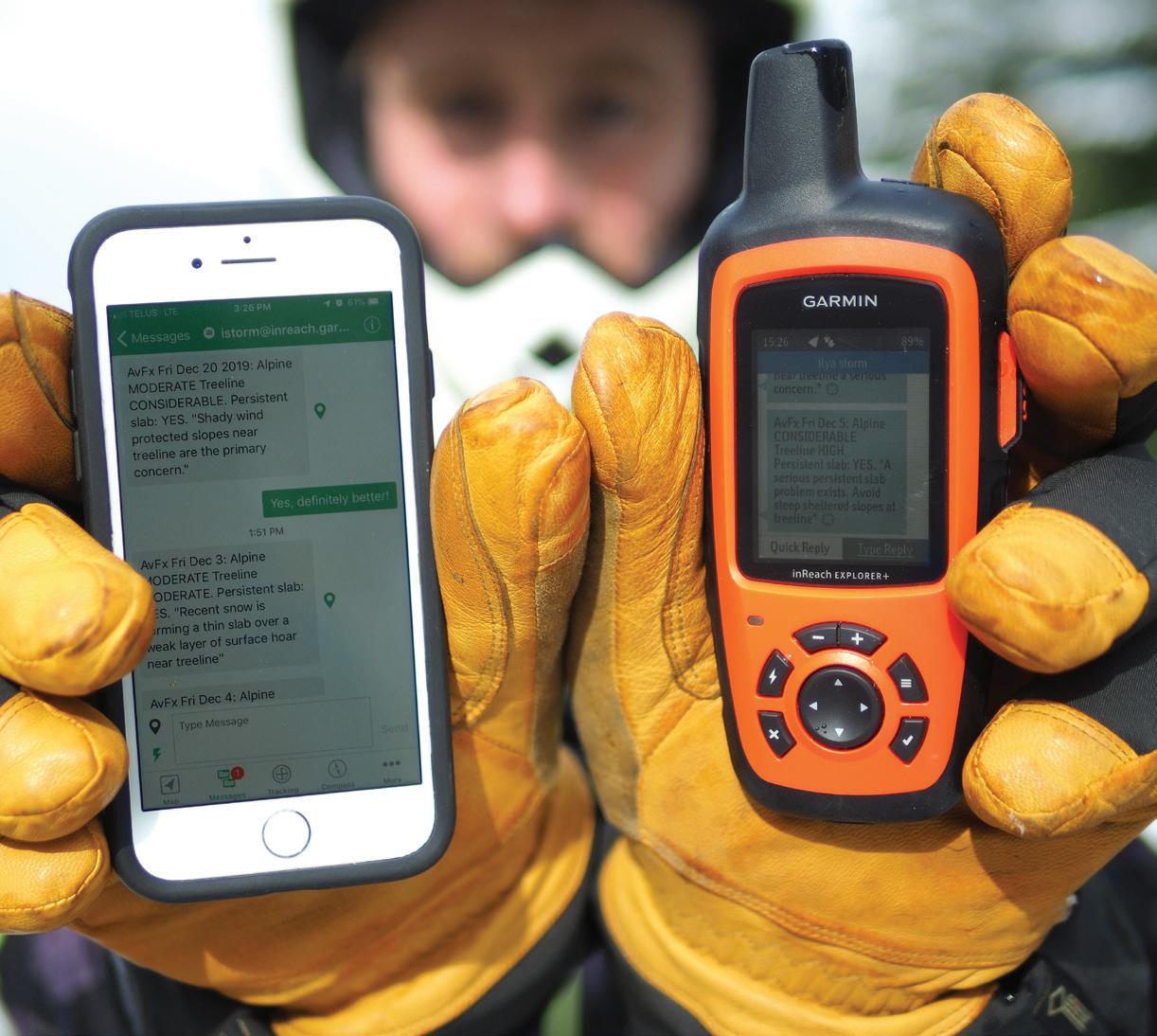
Through social media contests, we used prizing as incentives to encourage adoption of the platform. In addition, our field teams created their own MIN posts on a weekly basis for their respective regions. They shared them across their region-specific social media, highlighting concerns in the snowpack while encouraging other local users to view the data and submit their own observations.

We are
looking for ways to deliver avalanche
information toImage: Alex Cooper Image: Nicole Matei
Staying current with the latest research is essential to reducing avalanche accidents. We have a strong partnership with Simon Fraser University’s Avalanche Research Program (SARP). Our program director, Dr. James Floyer, is an adjunct professor with SFU, and we collaborated with SARP to allow forecaster Dr. Simon Horton to complete a post-doctoral project on snowpack modelling in 2021.
Avalanche Canada benefits greatly from this partnership with SARP, which focuses on developing evidence-based tools for backcountry users in avalanche terrain. Avalanche Canada senior staff consults regularly with the SARP director, Dr. Pascal Haegeli, and this work has already yielded some seminal results that have shaped our programs. Below are some current SARP projects that we see as especially promising for public avalanche safety.
• Snowpack modelling is now building on the established infrastructure, and integrating solutions to evaluate and correct the model, based on operational snowpack observations. The goal of this research is to incorporate the approach used in the human assessment process to extract meaningful information regarding the avalanche hazard.
• A research project aims to support an improved collective understanding of mountain knowledge through Indigenousled research collaborations and systems. This research will facilitate the move towards more targeted, equitable, and effective communication strategies.
• A research project at the SFU School of Interactive Arts and Technology is developing visual analytics systems that address uncertainty and ambiguity in avalanche forecasting and other complex analysis domains.

• Improving our understanding of how recreational users perceive and apply the North American Public Avalanche Danger Scale.
• Studying how forecasters determine avalanche problems, aiming to better correlate and standardize the data and conditions required for each problem.
• Analyzing the effectiveness of our current forecast for users and testing new methods of communicating, including interactivity and improved iconography.
• Comprehensively understand recreationists’ avalanche risk management practices when travelling in the backcountry to inform improvements in recreational avalanche risk management decision support tools.

• Studying motivations behind why people recreate in the backcountry, to help make avalanche risk communication services more effective.
• Working with SFU and Parks Canada, we continue to work on a computer-generated method to map terrain using the Avalanche Terrain Exposure Scale (ATES). While the first steps to this new auto-ATES have been developed, we are currently focusing on validating the algorithm by comparing outcomes from a variety of human mappers. The goal is to create a validating process for auto-ATES, as well as guidance for mapping that supports a standard result.
This image shows a comparison of three individual human maps used to create an ATES benchmark map. This is part of our collaboration with SFU and Parks Canada to develop a validation process for auto-ATES.
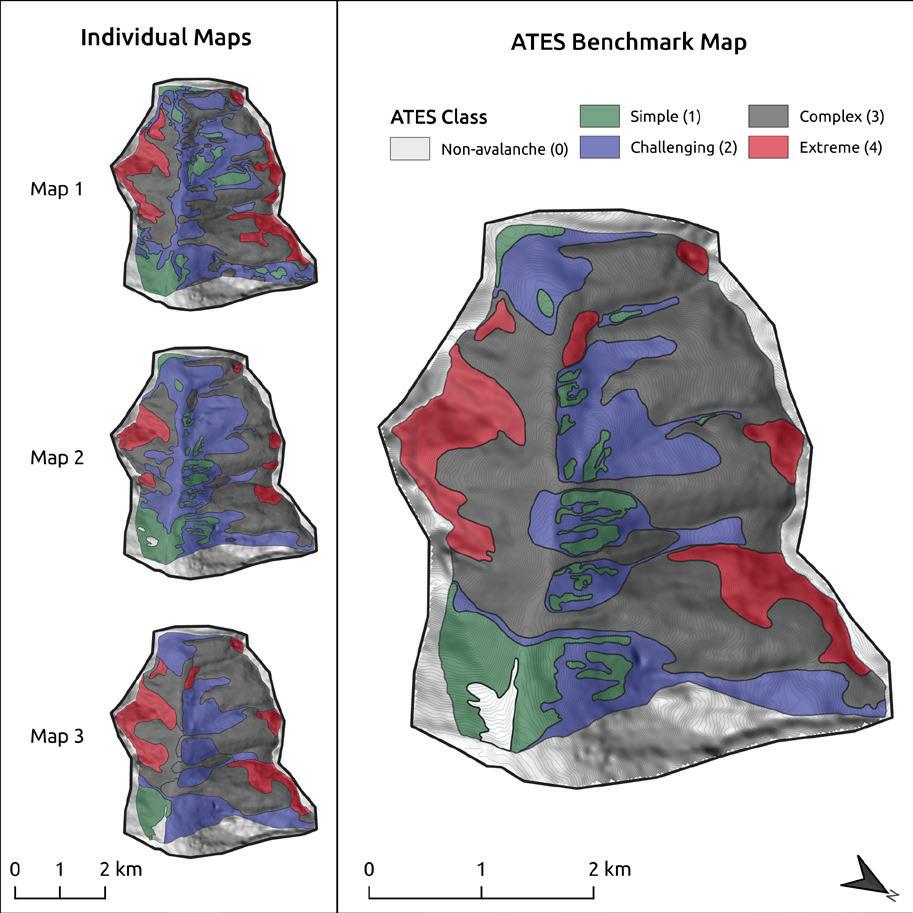
Image: John Sykes
Revelstoke forecasters are regularly dispatched throughout western Canada, to fill gaps in our data, to increase their familiarity with user areas, sometimes to examine snowpack anomalies more closely, and always, to connect with users. With our improved resources, we can better support this field program for our Revelstoke team.
This was the busiest season yet for our forecasting program. All forecasts are published out of our Revelstoke office and this season, our team issued 2,307 forecasts—the most ever! Much of this work is done at the office, analyzing data from across our forecasting area. But our forecasters also spend time in the field.
A total of 12,342 students took a course through our Avalanche Canada Training program this season. While this is down from last year’s peak at over 15,000 students, it continues a general upward trend from previous years.
Most students (87%) took an AST 1 course. We are seeing a growth in the number of snowshoers taking a course and as we are seeing increased interest from this user group, we predict this trend to continue. Snowmobiling course numbers remained relatively low. Over the season we developed a new AST 2 motorized curriculum, which will be in effect for the coming winter, and we hope this will drive more students to this advanced course.
AST 1 TEACHES THE FUNDAMENTALS OF AVALANCHE FORMATION, TRAVELLING IN AVALANCHE TERRAIN AND COMPANION RESCUE.
AST 1 Course Participants 12,000 9,000 6,000 3,000 20-21 21-22 17-18 18-19 19-20
AST 2 INCREASES AND DEVELOPS KNOWLEDGE OF TERRAIN CHOICES, ROUTE FINDING AND DECISION MAKING IN AVALANCHE TERRAIN.
COMPANION RESCUE SKILLS A ONE-DAY COURSE OFFERING AN INTRODUCTION OR REFRESHER ON THE LATEST TECHNIQUES IN AVALANCHE INCIDENT RESPONSE.
MANAGING AVALANCHE TERRAIN A ONE-DAY COURSE FOR AST 1 GRADUATES, AIMED AT DEVELOPING MORE ADVANCED WINTER BACKCOUNTRY TRAVEL SKILLS.
2,000 1,500 1,000 500 17-18 18-19 19-20
AST 2 Course Participants 20-21 21-22
400 300 200 100
CRS Course Participants 20-21 21-22 17-18 18-19 19-20
MAT Course Participants 17-18 18-19 19-20 20-21 21-22
200 150 100 50
Courses are taught by independent, third-party providers. Avalanche Canada administers the program, develops the curriculum, licenses the providers, and develops resources for instructors and students. There are 228 licensed providers and 186 were active during the 2021-22 season.
We provided instructors with flexibility in how they taught their courses and interacted with students again this year. Some instructors took advantage of online learning to provide an extra weekend field day. The online platform allowed students and instructors to connect after the field day, when everyone was refreshed. Some instructors used it to have open communication with students before, during, and after the course, and answered questions throughout the season.
We are hugely appreciative of the efforts and initiatives our instructors showed this season.
We created a new Avalanche Skills Training 2 motorized curriculum this winter. This curriculum addresses snowmobilespecific issues and will be invaluable for our Sled AST 2 providers. The new curriculum focuses on communication best practices, transceiver interference, rescue practice, snowpack tests, and teaching strategies. We hope this encourages more sledders to continue their avalanche education.

Avalanche Canada has had a youth program for 15 years, delivering in-class sessions on winter safety and avalanche awareness to students from K–12. This program is provided to school districts in Alberta, BC, and the Yukon. Our goal is to reach students from K–12 with age-appropriate curriculum and training to help prepare them for their initial steps into the backcountry. We delivered programming in northwestern BC, including schools in the Smithers and Terrace districts. We also employed our largest youth educator team to date, with 13 staff and two program coordinators.
With Covid restrictions easing, Avalanche Canada’s Youth Outreach Program succeeded in reaching nearly 7,800 students and youth in BC, Alberta, and the Yukon—more than double the number of students reached during the first winter of the pandemic. The program is primarily interactive in-class theory, combined with some outdoor, hands-on rescue training. Virtual programming was implemented in 2020 due to the pandemic and will remain an option for distance learning.
The Avalanche Canada Youth Program continues to thrive and grow due to our government and program partners, sponsors, and contributing organizations—especially the Columbia Basin Trust, Parks Canada, and the Hugh and Helen Hincks Memorial Fund. The operational success and appreciation are due to our dedicated team of youth educators, teachers, enthusiastic students, and school districts who welcome this program into their communities with open arms.
Columbia Basin—2,448 students Avi-Smart (Calgary, Bow Valley, and Columbia Valley): 3,896 students South Coast, Yukon, Okanagan, and Northern Alberta: 1,375 students AST 1: 79 students
Total: 7,798 students
Avalanche Canada supports external youth programs with resources, materials, and curriculum to assist teachers and parents who are interested in teaching basic avalanche education. Our website has a youth section where anyone can access resources, handouts, presentations, and more to aid in their lesson plans.
We again provided subsidized AST 1 courses for secondary school students. This widely recognized course includes classroom and field time, with an emphasis on recognizing avalanche terrain, understanding the avalanche forecast, trip planning, and rescue skills training. This season we certified 79 high school students in Golden, Revelstoke, Creston, Trail, Fruitvale, Rossland, and Elkford.
Our Toolbox Program continues to be very popular. We maintain five toolboxes that each contain 15 – 20 sets of avalanche rescue gear, including transceivers, probes, and shovels. These boxes are circulated throughout Alberta, BC, and the Yukon during the fall, winter, and spring providing educators with the gear and resources they need to teach basic avalanche rescue training to youth. More than 880 students in over 20 different schools benefited from the Toolbox Program this winter for hands-on practical avalanche awareness lessons.
Thank you to MEC, BCA, Mammut, and the Revelstoke Credit Union for supporting this important program.
Josh Smith, one of our youth education coordinators (in yellow), teaches companion rescue skills to a group of students at Walnut Park Elementary in Smithers, BC.
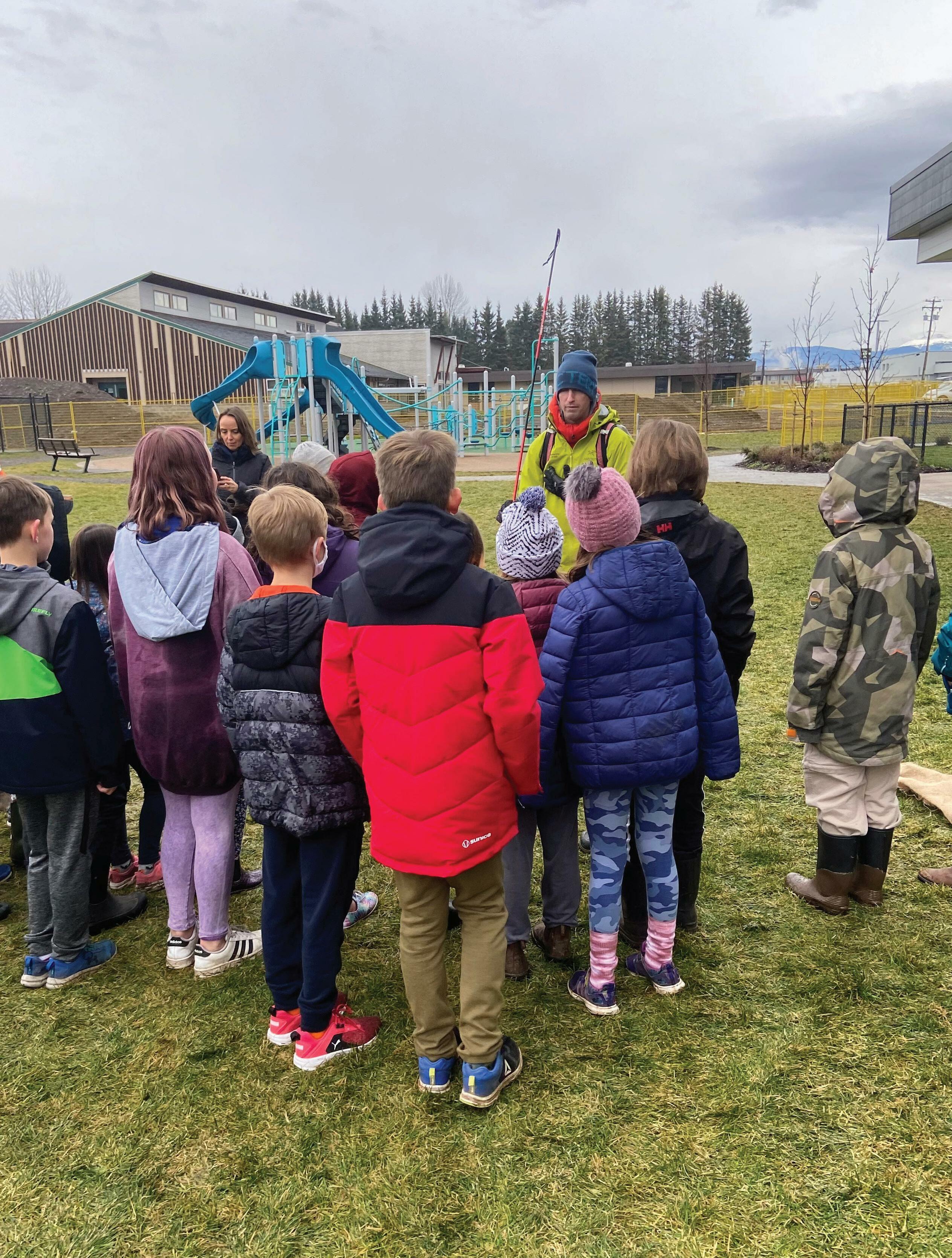
Image: Walnut Park Elementary
“Thank you so much for the great presentation yesterday. Melissa delivered the program in an engaging and age-appropriate way. The students gained a lot of knowledge about how to play safely in the mountains. They loved the videos and playing games to learn about the safety equipment. Looking forward to future presentations. Thanks for keeping us safe out there!”
Kim Hammerich, Grades 3 – 4, Nelson, BC
“Crescent Heights has a growing Outdoor Pursuits program which focuses on learning through the outdoors. Part of the program is outdoor survival skills and partnering with Avalanche Canada allowed our students to learn snow safety in a practical and theoretical way. Their educators were fantastic with our students and allowed our teachers to partner with them to bring awareness of avalanche safety to our students!”
Jenna Seagrove, Grades 10 – 12, Calgary, AB
Pandemic measures continued to restrict our outreach program, but our field teams were able to present at several events throughout the season. All our field teams maintained a very lively and engaged social media presence.
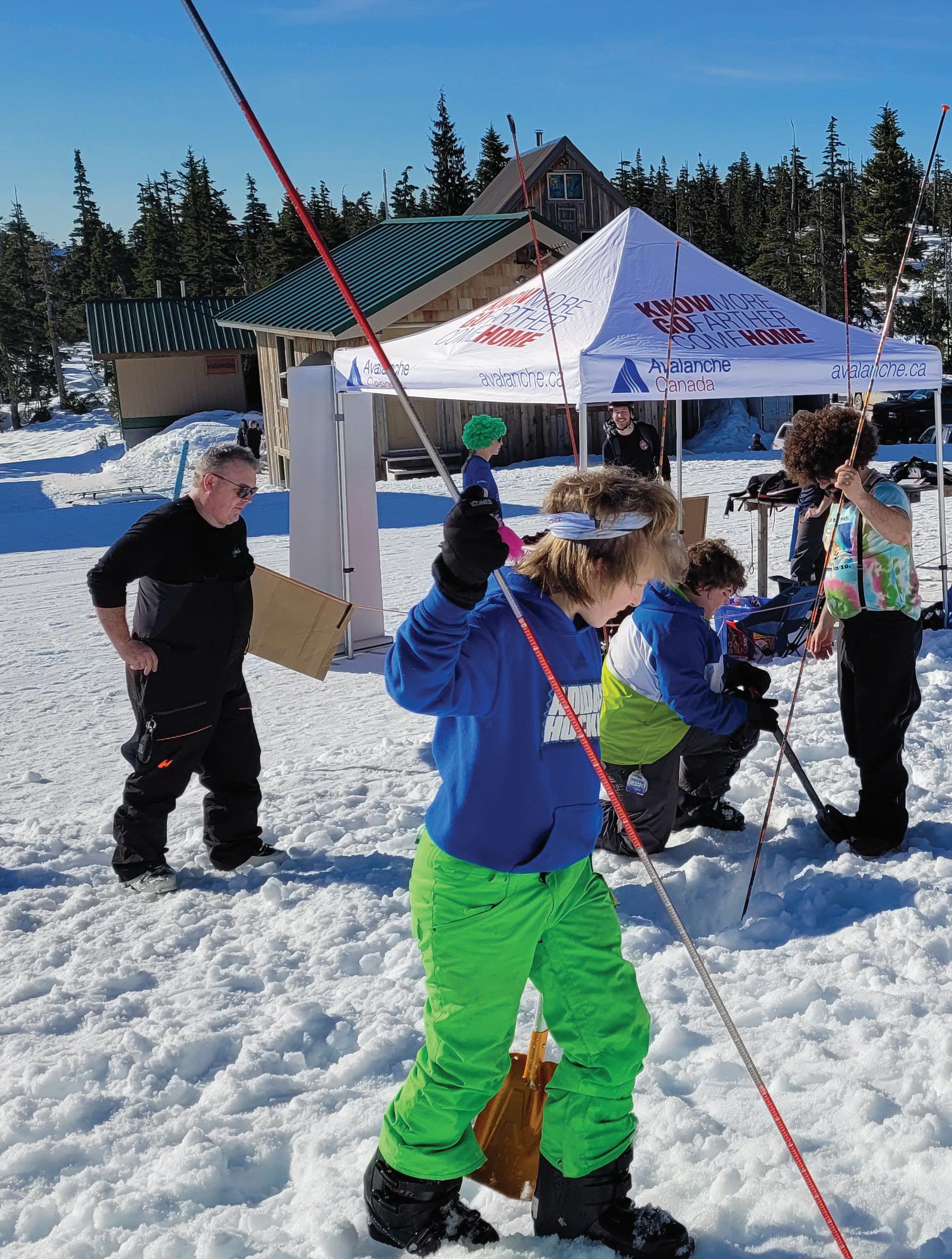
Video and images were shared regularly, helping to communicate current conditions and terrain choices with local users.
We continued our webinar program, which we introduced in 2020. This year we hosted 15 webinars with over 2,100 attendees. The webinars are free, and the recorded events are available online. While the attendance was not as high as our first year, we still reached far more people than we could with in-person events. These one-hour webinars are designed to attract a wide variety of user groups, and many of the sessions are expressly targeted to specific groups such as snowmobilers, new backcountry users, ice climbers, or youth. We featured mid-season updates on conditions in the North Rockies, Vancouver Island, Northwest Inland, and Newfoundland. Next season, we are hopeful to get back to more in-person outreach events. Our plans include attending the Edmonton Snowmobile Show and delivering a seminar in Calgary focusing on new backcountry users.
 The Vancouver Island field team encouraged attendees to practice their avalanche rescue skills at the Mt. Cain Backcountry Fest Image: Colin Garritty
The Vancouver Island field team encouraged attendees to practice their avalanche rescue skills at the Mt. Cain Backcountry Fest Image: Colin Garritty
This was our second season for Avy Savvy, our online avalanche tutorial that features photos, videos, quizzes, and exercises to help users start their avalanche safety journey. This site continues to be very popular with users across Canada and internationally.

Avy Savvy modernizes our tutorial and aligns the curriculum with our Avalanche Skills Training Handbook, with chapters on avalanche formation, avalanche terrain, the avalanche forecast, trip planning, and companion rescue. Our vision was to create a product that would prepare people for their first forays into winter backcountry recreation and provide a solid foundation for their AST 1 course. It's also a great tool for anyone looking to refresh knowledge.
At the onset of the pandemic, we recognized that there was going to be an influx of new backcountry users and wanted to create a product to educate those uses on avalanche safety. Avy Savvy was a major undertaking that involved collaboration between our IT team, communications group, and forecasters. It features hundreds of interactive photos, videos, quizzes, and exercises designed to help people start their avalanche safety journey.
Highlights include:
• Route finding exercises to help people navigate through the mountains.
• Videos explaining the avalanche problems found in the forecasts.
• Exercises created by Simon Fraser University that test the comprehension of the avalanche forecast.
• An interactive section on companion rescue, featuring animation and video.
In keeping with our goal of providing products in both official languages, Avy Savvy was translated to French, where it is called Ava Avisé. Thank you to MEC, BCA, K2, the Government of Canada’s Emergency Support Fund, and the Community Foundations of Canada for supporting Avy Savvy.

We were pleased to present the Ice Climbing Atlas this year, an online project that defines and describes the avalanche terrain for popular climbs in the Canadian Rockies. Each entry in the atlas analyzes and maps a popular ice climb using the Avalanche Terrain Exposure Scale (ATES) and provides an overview of historical avalanche observations. Knowing a climb’s avalanche history provides climbers with a better understanding of the potential hazard. The project was spearheaded by our Avalanche Ambassador, Sarah Hueniken.
Sarah has conducted surveys and compiled the information on historical avalanche observations for each climb. Grant Statham, a visitor safety specialist in Banff National Park, has provided imagery and expert feedback. Currently the Ice Climbing Atlas provides information for eight popular climbing areas; it will continue to be updated as more climbs are mapped and analyzed. We have received a very positive response from the ice climbing community on this project and our hope is that by sharing this information will encourage even greater avalanche awareness among this group.
Yukon field team members conduct an impromptu avalanche awareness lesson for youth in the Whitehorse backcountry. Image: Yukon field team
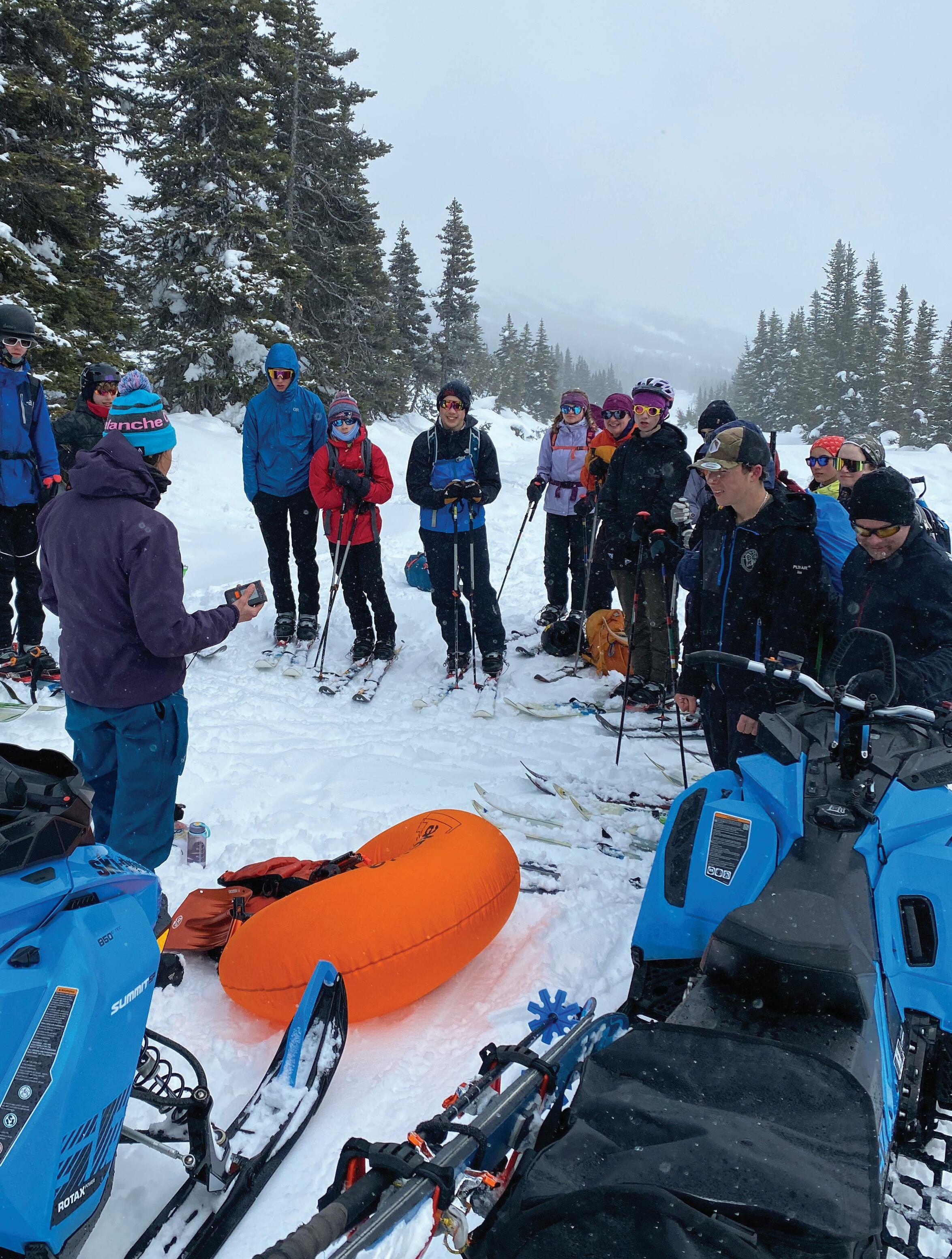
Awareness Days is a celebration of our winter heritage, an opportunity to learn more about our winter environment, and a way to build awareness of backcountry safety. It is a grassroots event, where local organizations such as ski resorts, snowmobile clubs, BC Parks, Parks Canada, search and rescue groups, and others host avalanche awareness activities in their area. We strongly appreciate the volunteer efforts that go into hosting these events. Through their efforts, we can share our messaging with thousands of people across the country.
We are especially appreciative of the groups that use the occasion to raise money for Avalanche Canada. Many thanks to all donors for their generosity and ongoing support of our services.
Avalanche Canada has had a dedicated snowmobile outreach program since 2011.

Effective engagement with the snowmobile community is one of our top priorities. We make significant efforts to build and maintain connections throughout Canada, with a specific emphasis on reaching riders in Alberta and Saskatchewan.
We have strong connections with numerous snowmobile clubs across western Canada, as well as their member associations—the BC Snowmobile Federation (BCSF) and the Alberta Snowmobile Association (ASA). These relationships are vital to our public safety efforts, and we are proud of the many projects we’ve worked on together over the years.
We recently worked with ASA Executive Director Chris Brookes to develop avalanche safety material for Alberta's Safe Riders program. And under the leadership of Executive Director Donegal Wilson, the BCSF has been fundamental to many of our snowmobile outreach projects, including Throttle Decisions.
In early February, we partnered with Ski-Doo and Polaris to deliver a snowmobile-specific webinar on choosing terrain.
Mentorship is an indispensable and well-established pathway to success in the professional avalanche industry, yet snowmobilers face barriers not typically encountered by the ski sector when it comes to accessing professional practice. In the winter of 2021, we launched a snowmobile mentorship pilot program with three successful applicants.
This season, six mentees joined our North Rockies or South Rockies field teams to experience how professionals plan and debrief their days and participated in at least one field day each month. Mentees had the opportunity to build industry relationships while practicing skills such as snowpack evaluation, hazard assessment, and risk communication with guidance from our experienced field teams. Avalanche Canada benefited by acquiring new data streams from our mentees, gaining sledders to spread our avalanche safety messaging, and improving our snowmobiling skills.
Providing mentorships supports the professional growth of snowmobile practitioners, enabling them to go on to instruct sled-based AST 2 courses. We look forward to leveraging what we learned from this pilot project and providing this opportunity again for winter 2022-23.
Snowmobile Outreach Coordinator Brent Strand and Avalanche Canada Board Member Curtis Pawliuk connect with backcountry sledders in the Valemount area. Image: Grant HelgesonAvalanche Canada has the largest forecasting program in the world in terms of area. With six field teams throughout western Canada and one in Newfoundland, our need for snowmobiles to access the backcountry has grown immensely. Sleds enable our field teams to access vast amounts of terrain in a day, which is critical to producing forecasts.
For more than a decade, we have had an agreement with the International Snowmobile Manufacturers Association, which has arranged loaner mountain snowmobiles for our field teams, forecasters, and outreach staff to use throughout the season. This program has been invaluable to us as we slowly acquire our own fleet.
This winter, BRP Ski-Doo supported us by loaning two BRP Summit Edge snowmobiles from RTR Performance in Kamloops, BC.
Polaris has loaned us a snowmobile every winter since 2012. This winter, we were loaned a 2022 Polaris 850 Pro RMK Axys 155 from Mountain Motorsports in Golden, BC. Mountain Motorsports went above and beyond by providing us a machine from the floor after the model we ordered was delayed.
Additionally, we are extremely grateful to the manufacturers and dealers that helped us procure new snowmobiles this year. Supply chain issues are affecting this industry as well, and buying new snowmobiles was not a sure thing. However, the manufacturers stepped up to make sure our orders went through and were delivered on time.
The Banner Recreation Group helped with our purchase of eight new BRP Ski-Doo sleds and Mountain Motorsports helped us purchase three new Polaris machines. Without all this support, we would not be able to do the field work essential to our forecasts and outreach efforts.
Our snowmobile committee (SledCom) was established in 2009 with the purpose of better understanding and meeting the avalanche safety needs of the snowmobiling community. Over the years, Sled Com has been an effective voice for the community, providing Avalanche Canada with valuable feedback, networking, and programming suggestions. Sled Com members are representatives from the greater snowmobile community. Many thanks to the following who are volunteering their time and energy to this important initiative.
Brent Strand (chair) Trish Drinkle
Lisa Block Curtis Pawliuk
Gen Byl
Avalanche Canada works with the following provincial snowmobile organizations:
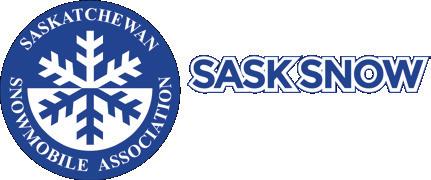


How do we measure the effectiveness of our public avalanche safety
While fatality numbers may seem like an obvious metric, they don’t tell the whole story. We have no way of knowing the total number of backcountry users and without that number, we don’t know the true accident rate.
The current annual average number of avalanche fatalities is 10 (based on a 10-year running average), which is at its lowest point since 1997. Despite the exponential growth in winter backcountry use, the annual average number of fatalities over the past two decades has been on a steady downward trend.
Although we feel confident in saying this has been accomplished through increased education and the coordinated avalanche safety services Avalanche Canada provides, it’s not the only marker of our success. There are other metrics that showcase the success of our programs this year: high enrolment in Avalanche Canada Training courses, the success of our webinar series, contributions to the Mountain Information Network, the rapid increase of our social media following and website views, and more.
Seeing a downward trend in avalanche fatalities is encouraging and lets us know that our work is making a difference. Through awareness and education, we continue to encourage the respectful and responsible use of Canada’s resplendent winter mountain terrain.

Partnering with Avalanche Canada and having their field team based in Rocky Harbour, NL has been a tremendous asset to Parks Canada, local communities, and visitors alike. Their expertise and ability to provide local information on avalanche conditions, winter safety, and their avalanche forecasting enhances the work of Parks Canada to ensure visitors have the tools and knowledge to experience Gros Morne National Park safely. The avalanche forecast, and the sharing of information on the Mountain Information Network and social media platforms, allows area residents, park visitors, and staff to make informed decisions about navigating through avalanche-prone terrain, building a culture of avalanche awareness. Parks Canada looks forward to ongoing collaborations with Avalanche Canada in Gros Morne National Park.
Jennifer Hoffman, Visitor Safety Coordinator, Parks CanadaK8 Mountaineering Club of Alberta fully respects the diversity of the climbing community in Canada. Every year we conduct activities that are strategically planned for each season such as high altitude camping, ice climbing, rock climbing, backpacking, winter alpine climbing, glacier travel, and crevasse rescue. We are honoured and grateful for our partnership with Avalanche Canada—especially for the successful and well-delivered AST 1 course in addition to the programs and services they provide. We became more confident as an organization when accessing the outdoors safely. Maraming Salamat (thank you so much) and more power!
Leonard
Maglalang, President, K8 Mountaineering Club of AlbertaSafety is a priority for BRP and we are committed to educating backcountry riders about avalanche awareness. We are grateful for the work Avalanche Canada does to keep snowmobilers safe from avalanches. The variety of programs they offer to the snowmobile community are immensely helpful in reducing sled incidents and promoting a culture of safety. We’re looking forward to continuing our partnership with Avalanche Canada to raise the level of avalanche awareness and preserve our sport for generations to come.
Anne-Marie LaBerge, Chief Marketing Officer, BRP
Avalanche Canada is grateful for the support of the following government ministries and departments:

Ministry of Transportation & Infrastructure Emergency Management BC
Ministry of Public Safety and Solicitor General BC Coroners Service
Ministry of Sports, Recreation, Arts & Culture Gaming Grants
Ministry of Forest, Lands, Natural Resources Operations & Rural Development Recreation Sites and Trails GeoBC
Ministry of Environment BC Parks Snow Survey Program
Ministry of Citizens' Services DataBC
Environment Canada

Meteorological Service of Canada Parks Canada
Ministry of Public Safety and Emergency Preparedness National Search and Rescue Secretariat
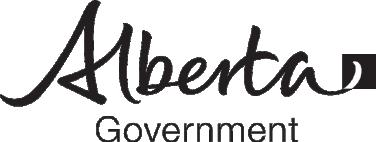
Ministry of Environment and Parks
Department of Community Services

Our sponsors are essential to public avalanche safety in Canada. We rely on sponsor funding for our Public Avalanche Warning Service, public outreach, and many of our education programs.
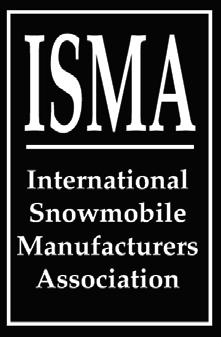




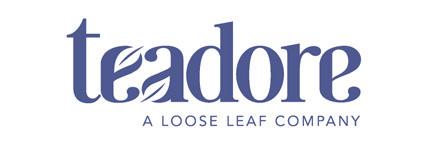

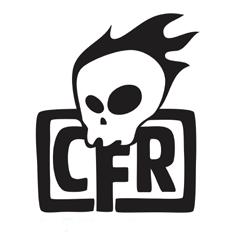


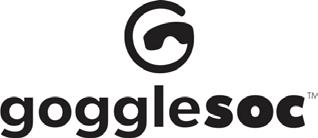
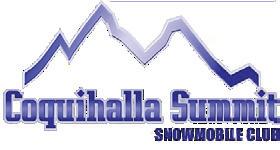


We are continuing to invest in AvID (Avalanche Information Distribution) to improve the tools our forecasters use to aggregate and analyze the massive amount of data they receive daily. We plan to roll out public-facing improvements in November.
We are taking steps to ensure our programs and services are welcoming to Canada’s diverse population, and we are continuing to work with diversity leaders across dimensions of difference to guide us as we move forward. We know representation matters, and we are committed to expanding our programming and improving our imagery and visual materials to be more reflective of Canada’s changing population. We also plan to welcome ambassadors across a diversity of backgrounds and lived experiences. We recognize that we have work to do—as an organization and as a society—to evolve the outdoor culture to be more reflective and inclusive. This is only the beginning.

We are introducing a new course for individuals who have completed an AST 1 and want to refresh their skills and knowledge. The fieldbased AST 1 Refresher provides a review of the material covered in the AST 1 course, with a discussion of industry updates. Although more than 12,000 people took an AST 1 this year, fewer than 1,350 completed an AST 2 course. Our hope is that this refresher course will encourage individuals with AST 1 education to continue their lifelong journey of avalanche education.
We are working to develop and implement a mandatory one-day training for new AST Providers and instructors. The training will familiarize instructors and providers with Avalanche Canada AST resources (e.g., Avaluator, AST Handbook, Trip planner, Dangerator), and provide guidance on how to create engaging lesson plans, assess student learning, and hone instructional skills to become a better teacher in the classroom, online, and in the field.
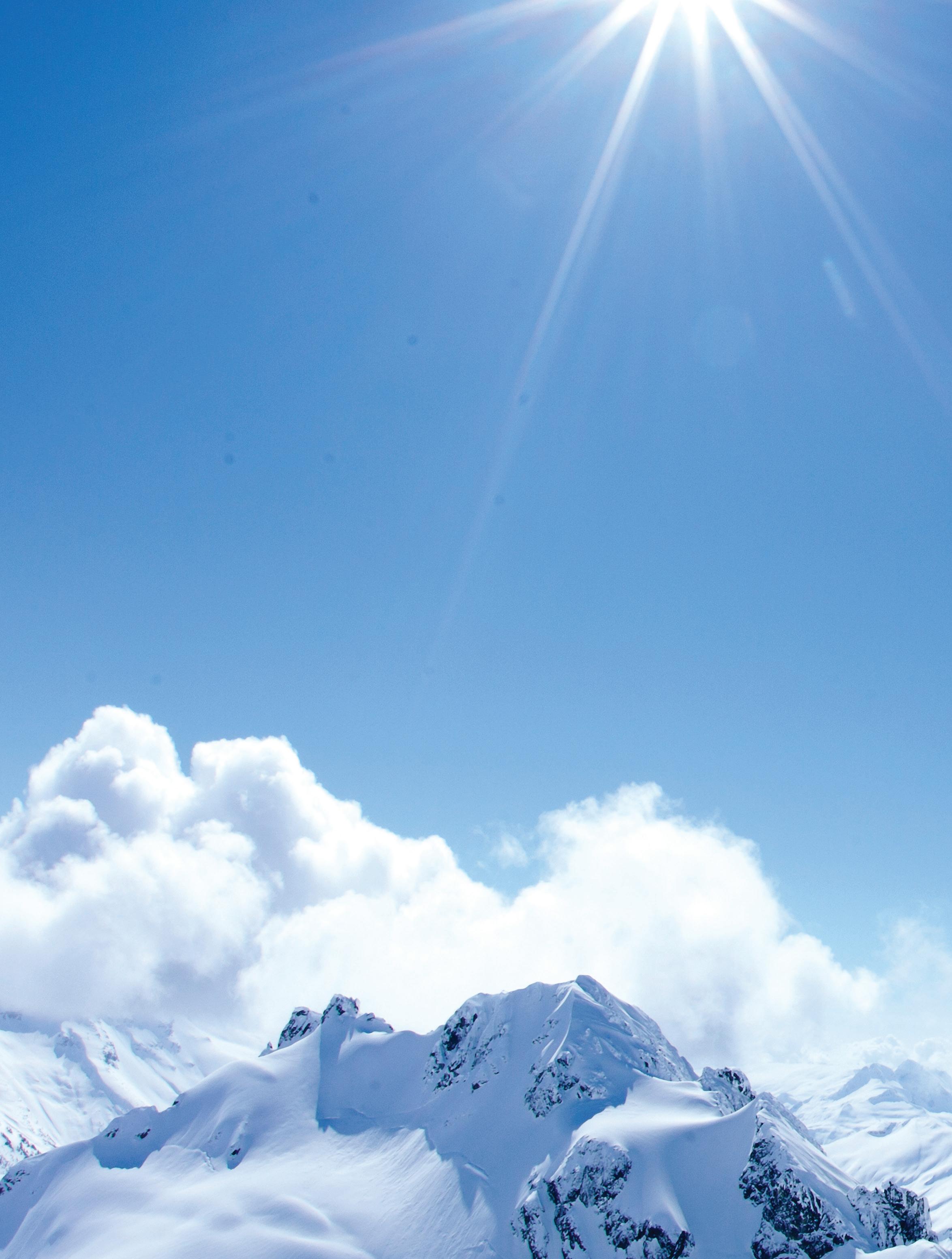
The board is run by a dedicated volunteer board of directors who are all committed to and passionate about supporting Avalanche Canada’s work. The board of directors continued to be engaged this year despite Covid, meeting in-person twice, online six times, and at the Canadian Avalanche Association annual general meeting. The board’s executive committee also continued to meet weekly during the operating season. We are looking forward to having more faceto-face meetings this year.
The board of directors is composed of individuals with a complementary skill set. It is tasked with the overall governance of Avalanche Canada. Directors are involved in the strategic planning process and review and approve budgets. Their priority remains the long-term sustainability of the organization.
In August, board member Curtis Pawliuk received the Queen’s Platinum Jubilee Medal. This medal, created to mark the 70th anniversary of Queen Elizabeth’s reign, was awarded to people who have made a positive impact on society. Curtis was recognized for his many years of leadership in Valemount, BC, developing recreational areas, promoting tourism, and conserving recreational areas. Congratulations, Curtis!

Kevin Seel holds undergraduate and graduate degrees in physical geography and a doctorate in environmental modeling from the University of Calgary. He has worked on projects across Canada and the U.S. in a variety of industries and is currently a senior environmental consultant at Golder Associates.
Kevin Williams has been involved in avalanche science, rescue, and education since the early 1980s. He was involved in avalanche work at Lake Louise, Fernie, and Whistler and was instrumental in the early development of the Avalanche Canada Training program. He holds a B.Eng and M.Sc (Geophysics) from McGill University and was a PhD candidate in avalanche research at UBC.
Mike McMynn is a chartered professional accountant who has worked at an accounting firm focused on small businesses, including not-for-profit organizations, and in the oil and gas industry. His experience over the last 10 years includes tax, financial reporting, organizational structures, governance, and team management. Mike is currently the controller of an oil and gas services company based in Calgary, Alberta.
William Jackson has an undergraduate degree in Electronic Systems Engineering and an MBA. Over the past 15 years, William has worked in a variety of roles focused on the use of information and technology to create business value. He is currently a director of research and innovation in the broader BC public sector.
Catherine Angus Kule Gingles
Chris Pawliuk
Christie Campbell John Irvine Jeremy Shier
Paul William Chatterton Terry Palechuk

Last October, Cheryl Goodwin stepped down as President of the Avalanche Canada Foundation. Under Cheryl’s leadership, the ACF effectively transitioned fundraising efforts online. She expanded the ACF’s Board of Directors by adding highly motivated and knowledgeable directors to support the ACF’s fundraising efforts. Thank you, Cheryl, for your support and dedication in leading the ACF through unprecedented times.
Like many organizations, we were eagerly awaiting the return of in-person events in 2021. However, given the circumstances, we continued to focus on online fundraising. Building on last year’s success, we held a virtual Party for Powder and Backyard Backcountry Challenge again this year. We held a new online fundraiser, Braap It UP geared towards the snowmobiling community. Overall, the ACF raised more than $110,00 for avalanche safety programs. A huge shout out to our donors and sponsors who contributed products and experiences as prizes. We truly appreciate your ongoing support.
We continue to support our community by awarding grants to individuals pursuing education in snow science and professional-level training. I encourage anyone interested to check out our website for details.
In May 2021, BC’s Minister of Public Safety and Solicitor General Mike Farnworth announced a grant of $10 million for Avalanche Canada. This investment provides much-needed stability for our programs and allows us to expand our services to under-served regions. Government grants are held and managed by the ACF and overseen by a committee.

However, we still need your support. The demand for our products and services is continuously increasing, which comes at a financial cost. These grants do not cover Avalanche Canada’s entire budget, and spending restrictions on the government funds mean there are projects and capital costs that require non-restricted monies to develop. This, combined with inflation and steadily declining sponsorship revenues, makes donations more important than ever. Please renew your support for the ACF with a donation and plan to attend one of our fundraising events.
Finally, I want to extend a heartfelt thank you to the ACF’s board of directors, advisors, contractors, and volunteers, and recognize the Avalanche Canada staff for their efforts in providing avalanche forecasts to support safe travel in the backcountry.
I wish each of you and your families a safe, snowy, and peaceful winter season.
Fabian Karg, PresidentWe hosted three successful online fundraisers this winter—Braap it UP in October, Virtual Party for Powder in November, and the Backyard Backcountry Challenge in February and March. Although pivoting to online events was challenging, the benefits outweighed the drawbacks.
Braap it UP!, a new online fundraiser, was Avalanche Canada Foundation’s most successful fundraiser yet, bringing in more than $60,000. Braap it UP! featured an online auction with over 30 items, including radios, avalanche airbags, guided snowmobile tours, and a draw for a brand-new Polaris snowmobile.
Thank you to all the businesses and organizations that donated prizes, and everyone who bought tickets for the prize draw or took part in the silent auction. This was the Foundation’s first fundraiser geared towards the sledding community and we are incredibly appreciative of the support. The money raised supports our public avalanche safety programs.
The second virtual Party for Powder auction and prize draw, held in November, raised more than $45,000 for public avalanche safety. Thank you to those of you who donated prizes, purchased tickets, and participated in the auction.
The second annual Backyard Backcountry Challenge raised more than $3,500 for public avalanche safety. Participants were challenged to ski tour the vertical of Mount Everest (8,849 metres) over the course of the month, while staying close to home. Forty-four people from BC, Alberta, Ontario, and Quebec, set out on skis, splitboards, snowshoes, and bikes. Ten people managed to complete the challenge, 20 made it halfway, and one individual climbed an impressive 17,658 m—just shy of double the elevation of Everest!
Thank you to FATMAP for providing one-month vouchers for all participants; many used them to trip plan and explore new places in their backyard. We also appreciate Mammut, Dakine, The North Face, and Arc'teryx for their generosity in providing prizes. The ACF looks forward to resuming live events in the coming year while continuing to leverage the benefits on online fundraising.
• Andrew L Evans
• Anonymous
• Bill Keenan
• Brent Saulnier
• Canada Helps - Edmonton Community Foundation
• Damon Ockey
• Dan & Nikki Hincks
• Darcy & Whitney Dueck
• David & Elisabeth Brownlie Fund
• Fall Line Initiatives Fund
• Jane O'Hara
• John Phillips
• Michael Mezei
• Mike Reyen Piers and Marnie Fothergill
• The Polar Foundation
• Trish Sloan
• United Way Calgary
• Viewpoint Foundation
The following awards were granted by the Avalanche Canada Foundation in 2021-22.
Simon Fraser University
• $20,000 was granted in support of the NSERC Industrial Research Chair in Avalanche Risk Management. This is the seventh year of a seven-year commitment totalling $240,000.
ISSW Fund
• Two awards totalling $6,600
Cora Shea Memorial Fund
• Two awards totalling $1,500
Hugh and Helen Hincks Memorial Fund
Despite the ongoing pandemic and many competing causes, this year the backcountry community once again rallied in support of the Avalanche Canada Foundation. While the Foundation made the difficult decision not to host in-person events again this year, we continued to see great support across several virtual events.
The grant received by the Foundation from the Province of British Columbia in late 2021, combined with the federal endowment from 2019 (both to be held in trust for Avalanche Canada) has allowed the Foundation to further its long-term support of avalanche safety programs and services delivered by Avalanche Canada.
We are grateful for this provincial and federal funding, but the Foundation continues to require support from the backcountry community. Given the sustained increase in winter backcountry use and escalating costs, the long-term needs of the backcountry community continue to exceed the financial resources available. Our fundraising activities will continue to be a critical pillar in supporting Avalanche Canada.
• One award totalling $15,000 Expenditures 2021-22
Apex
Arc’teryx
Arrow
Backcountry

Best
Black Diamond
Castle
Cheeta
CMH Heli
Coastal
Dakine
Eagle
FATMAP
OnTop
Ortovox
Polaris
Glacier
KLIM
Selkirk
Selkirk
Banff
The
TransRockies
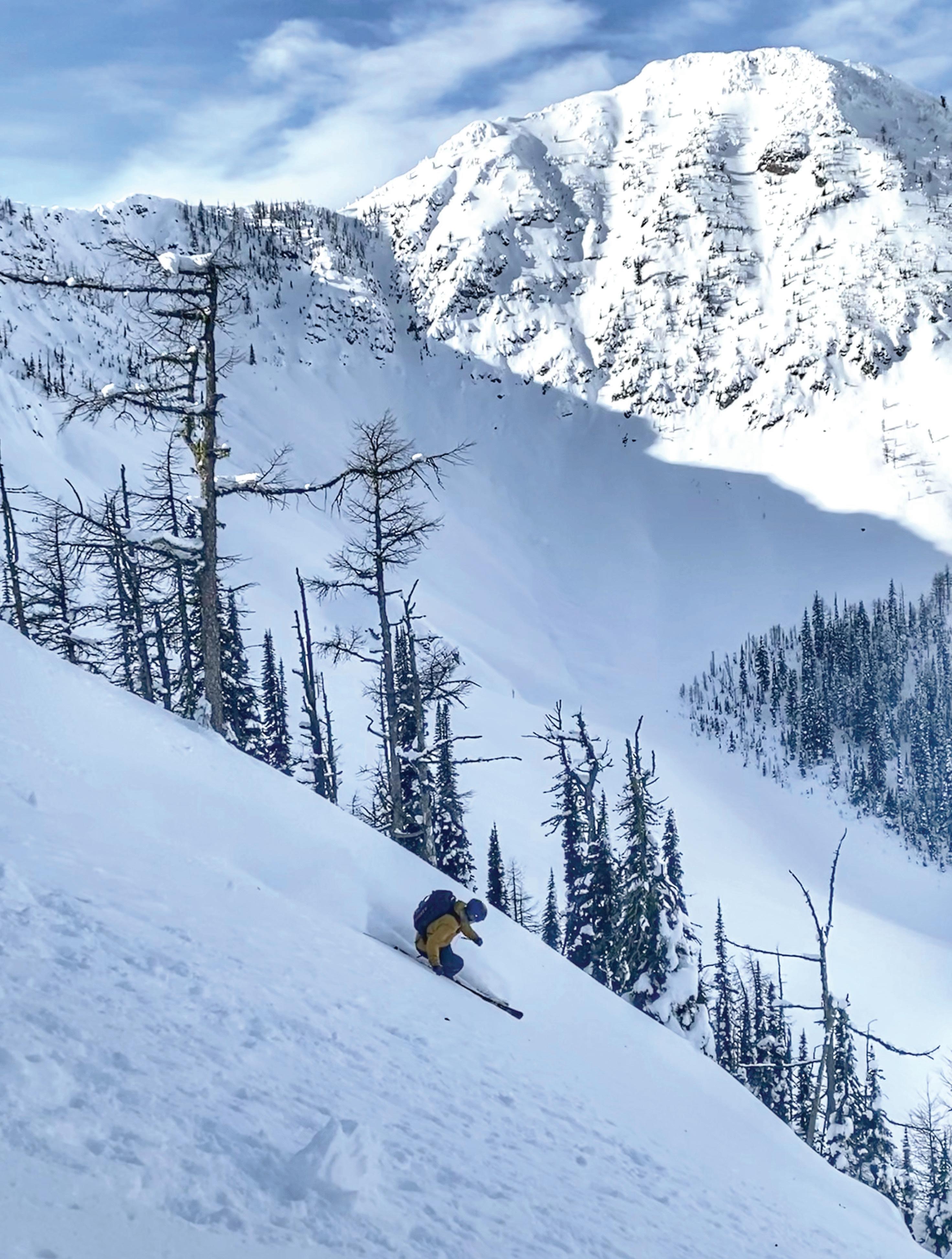 Image: Jennifer Coulter
Image: Jennifer Coulter